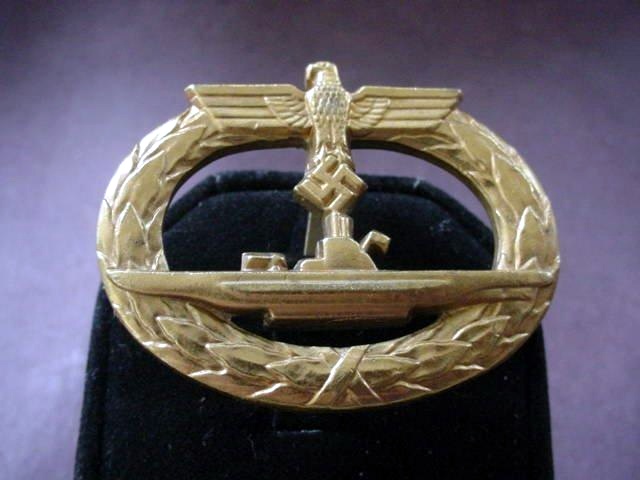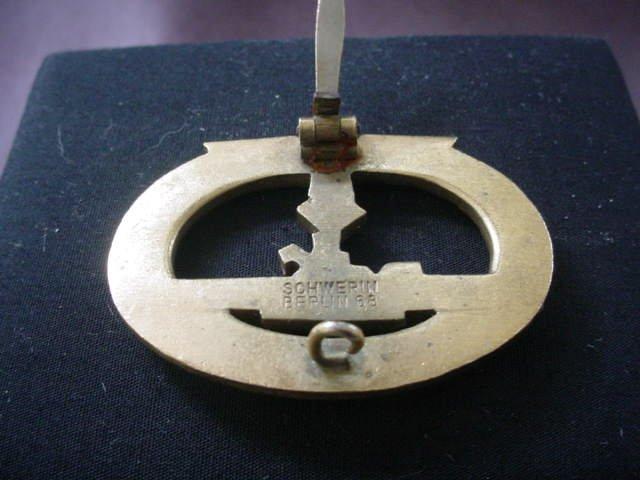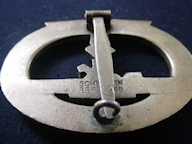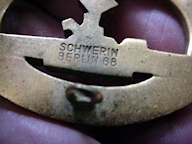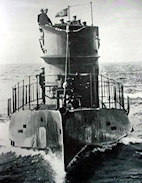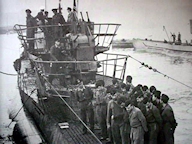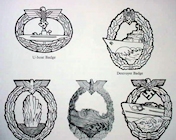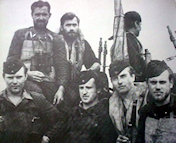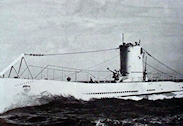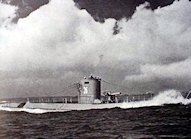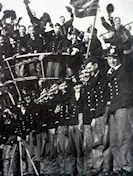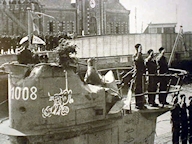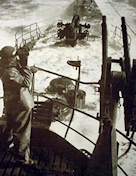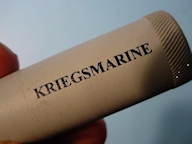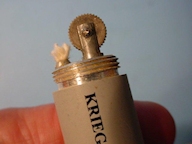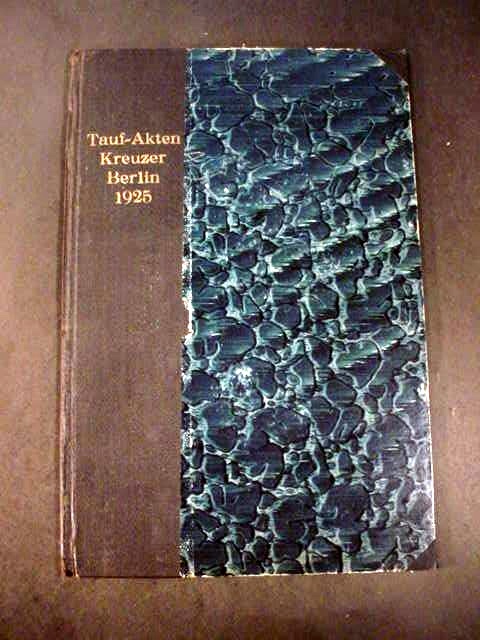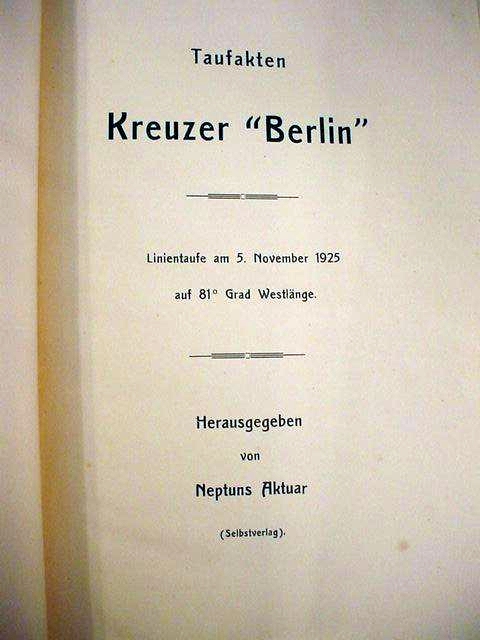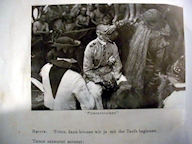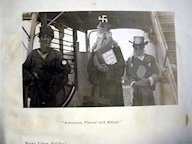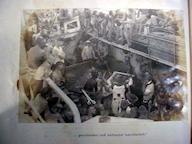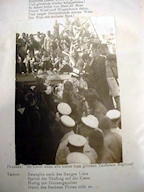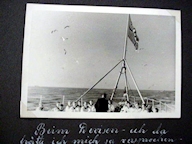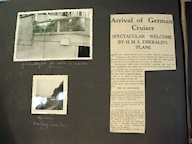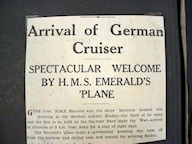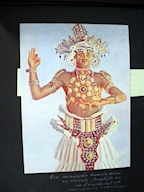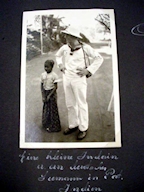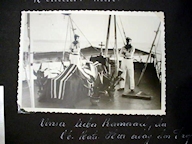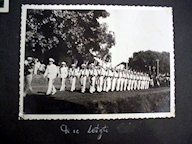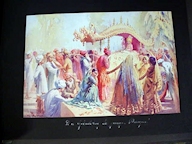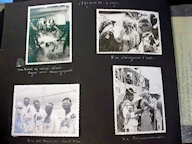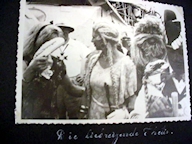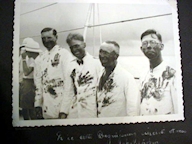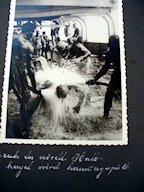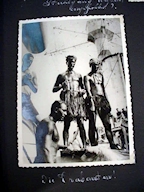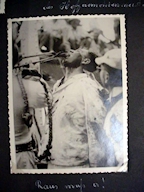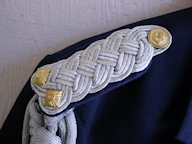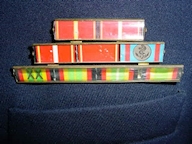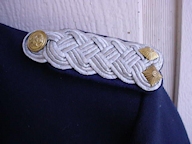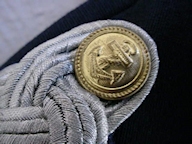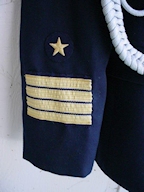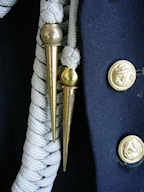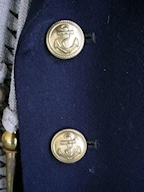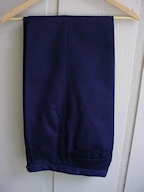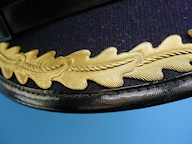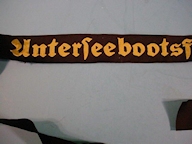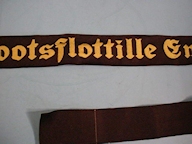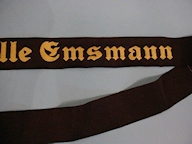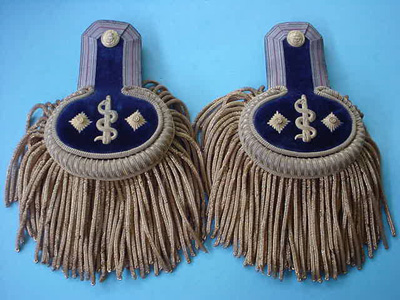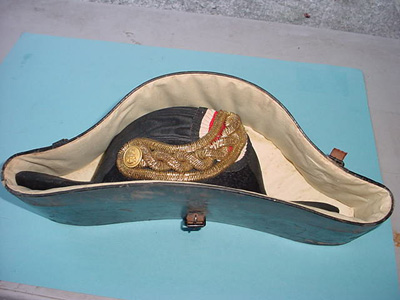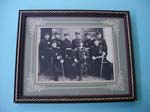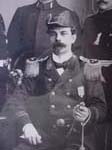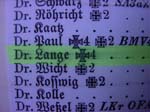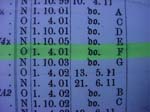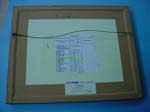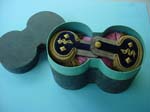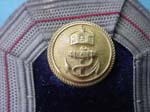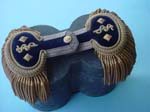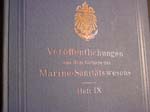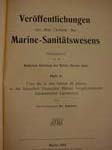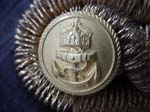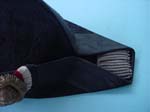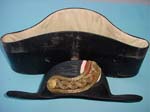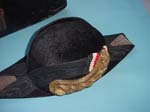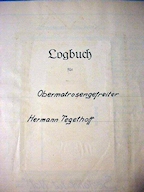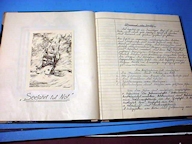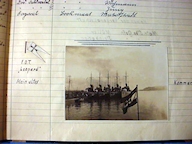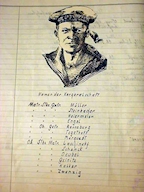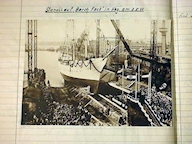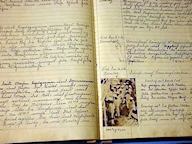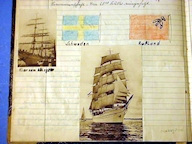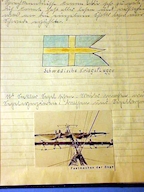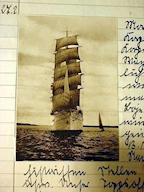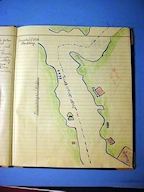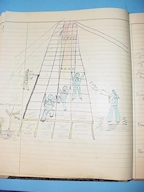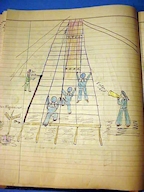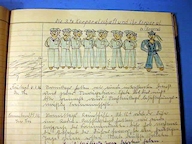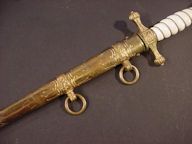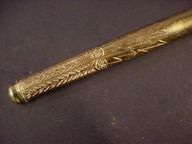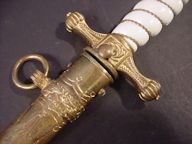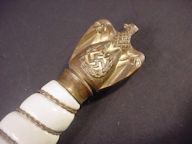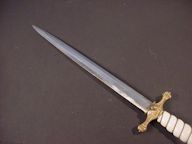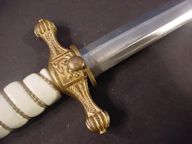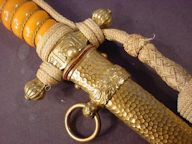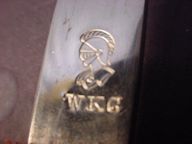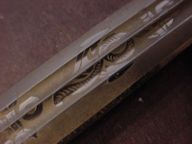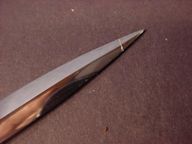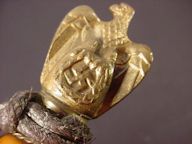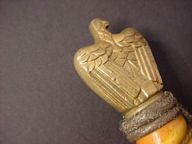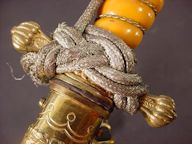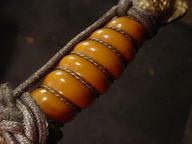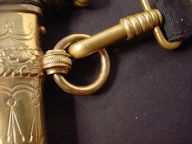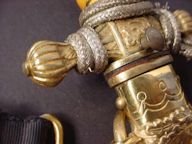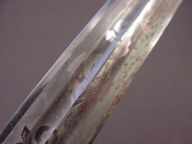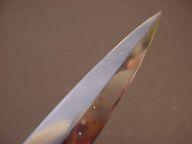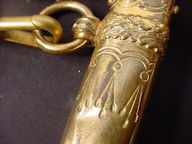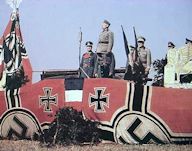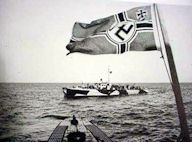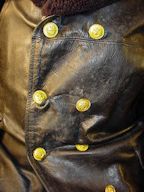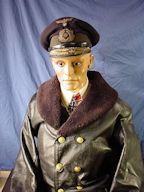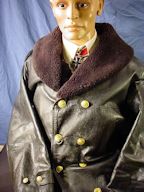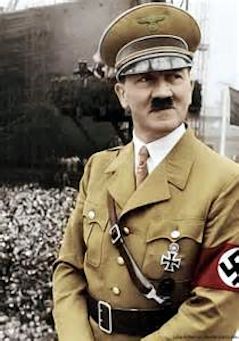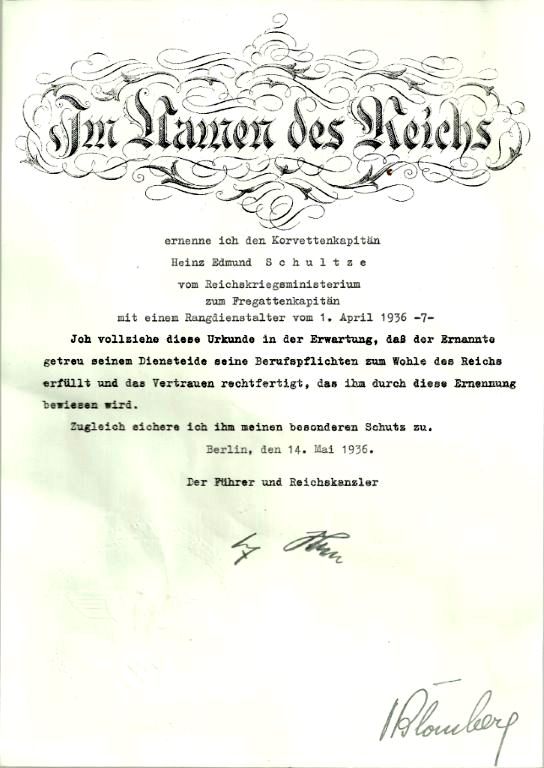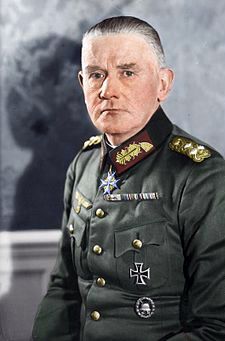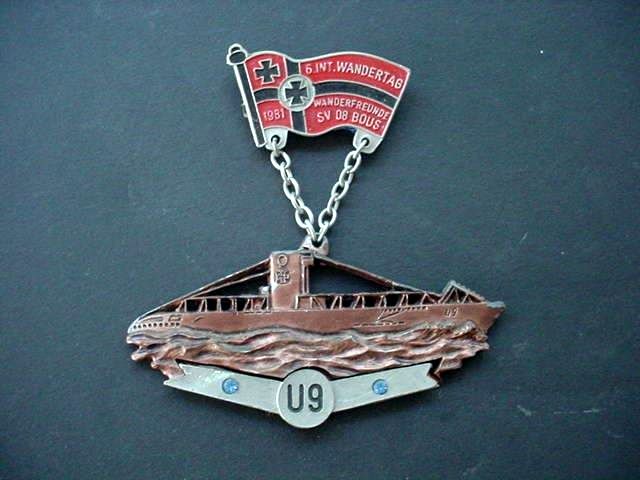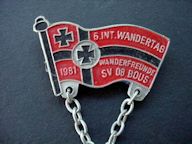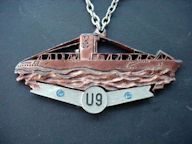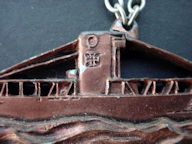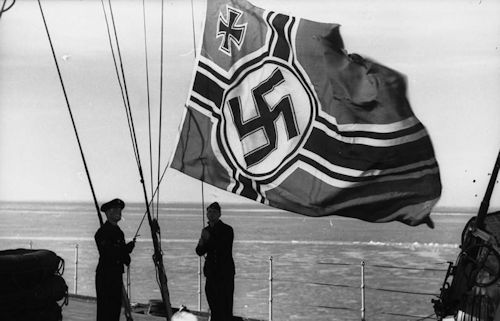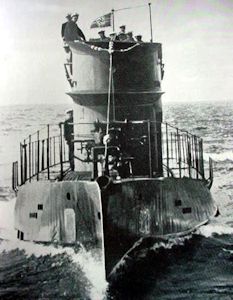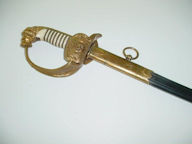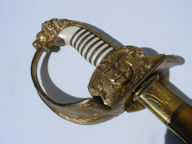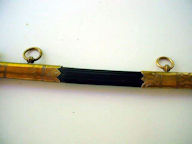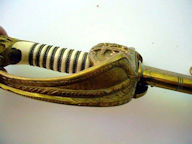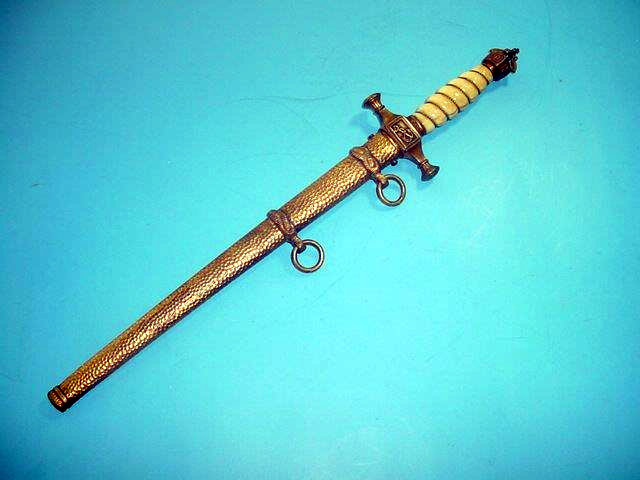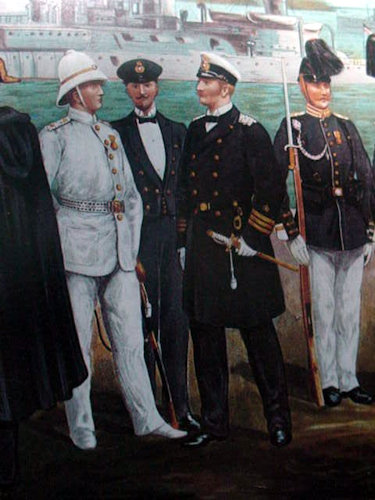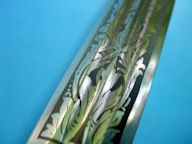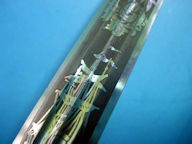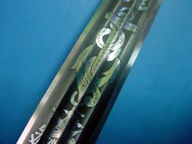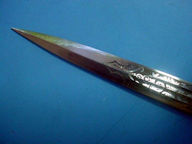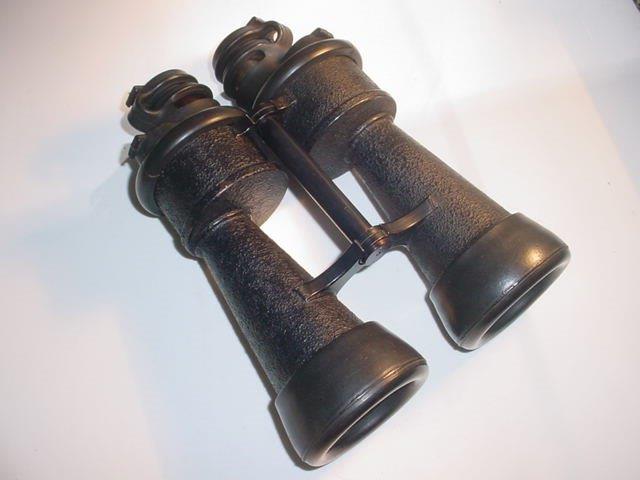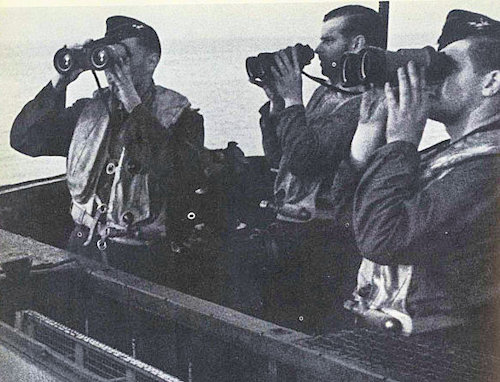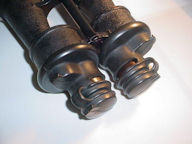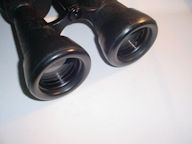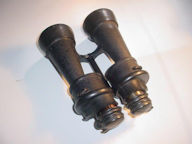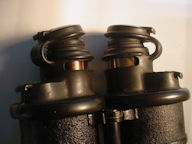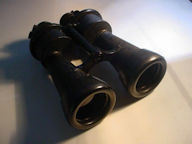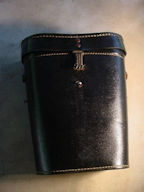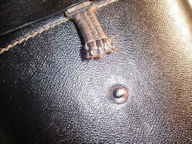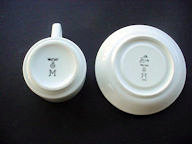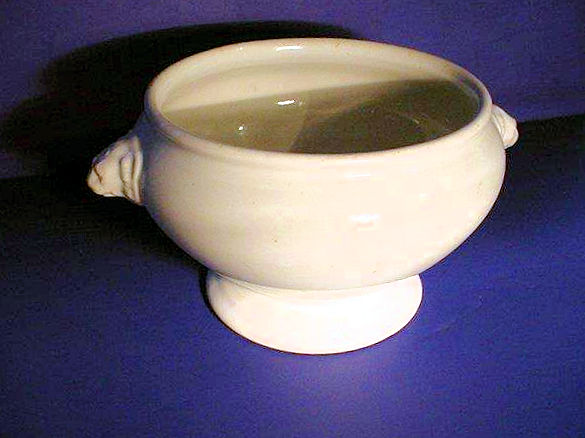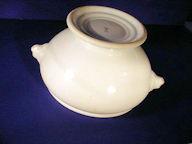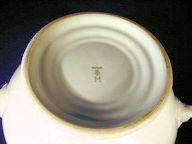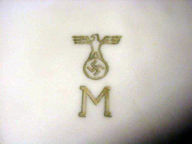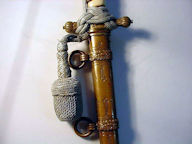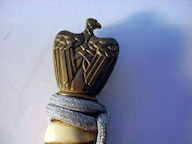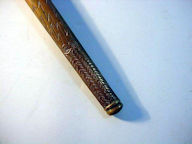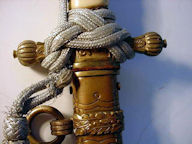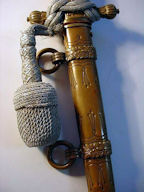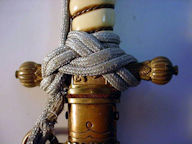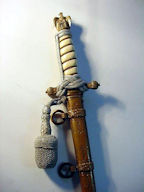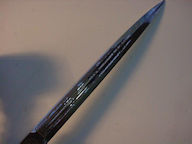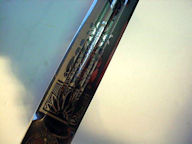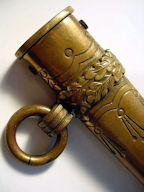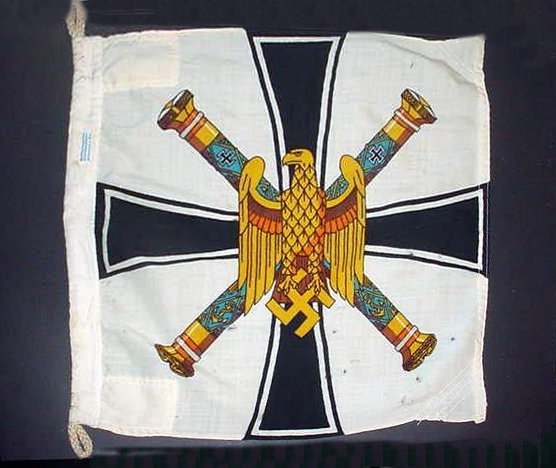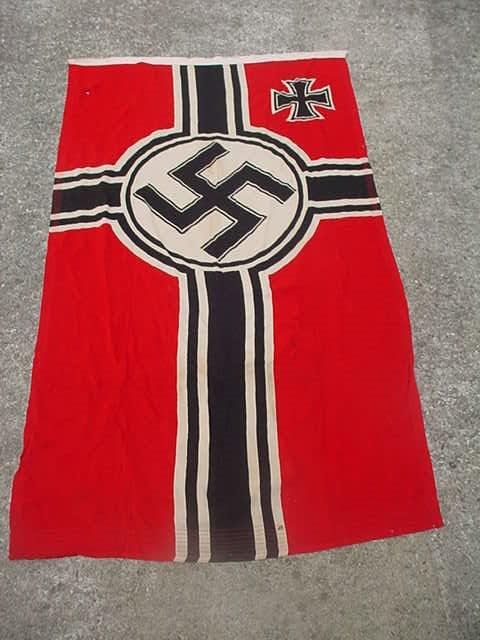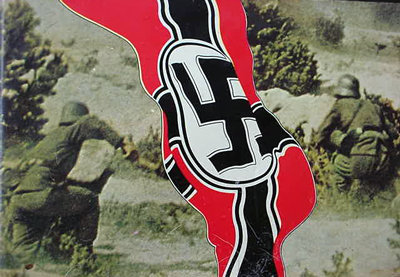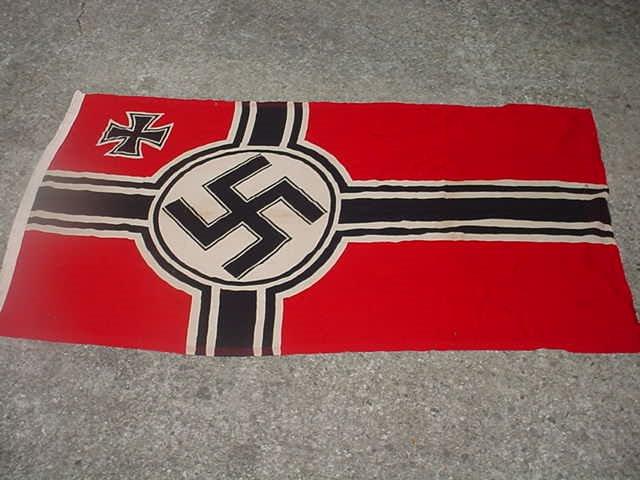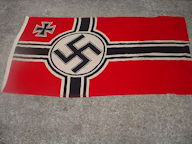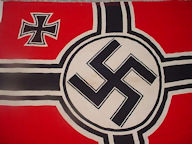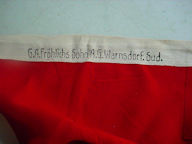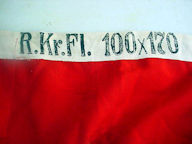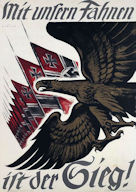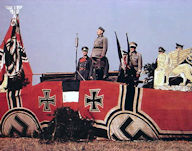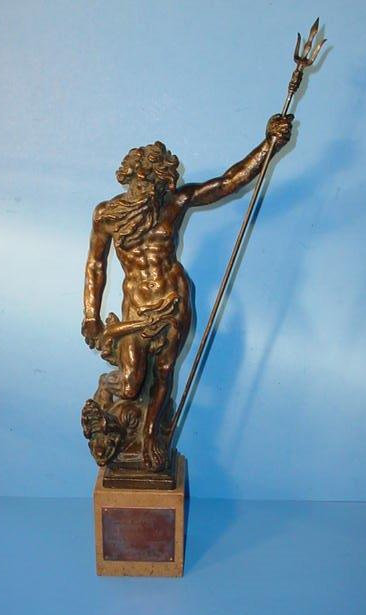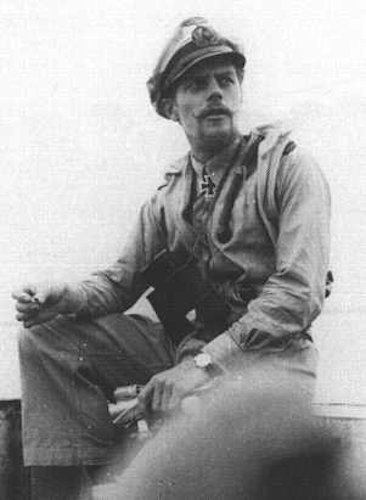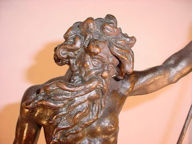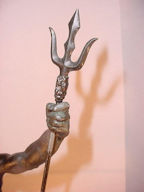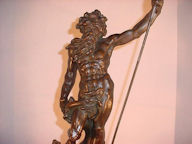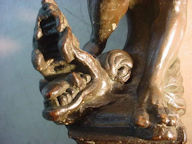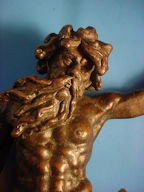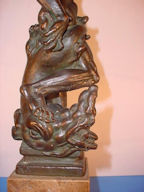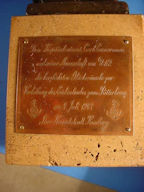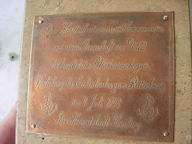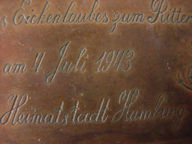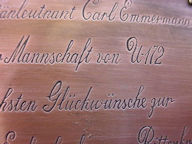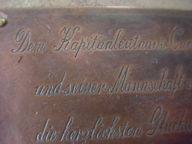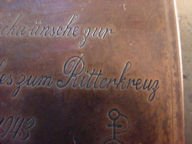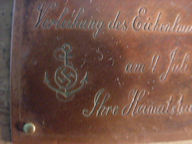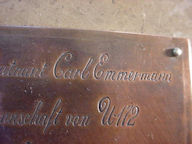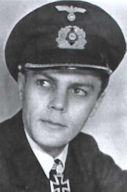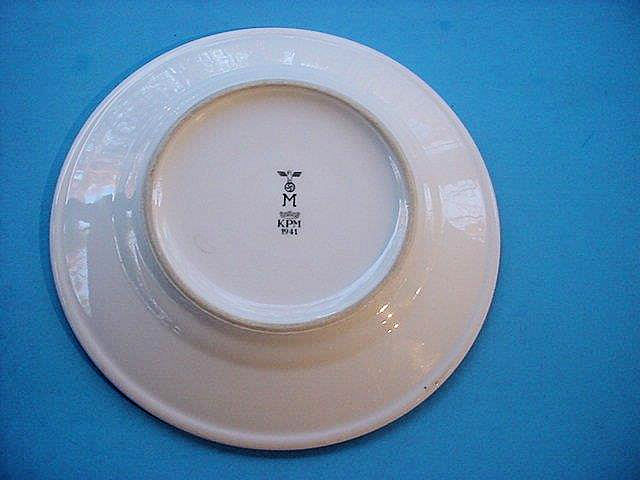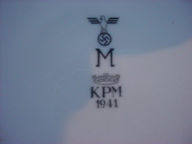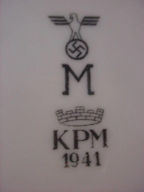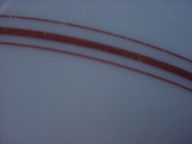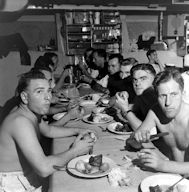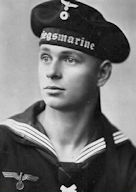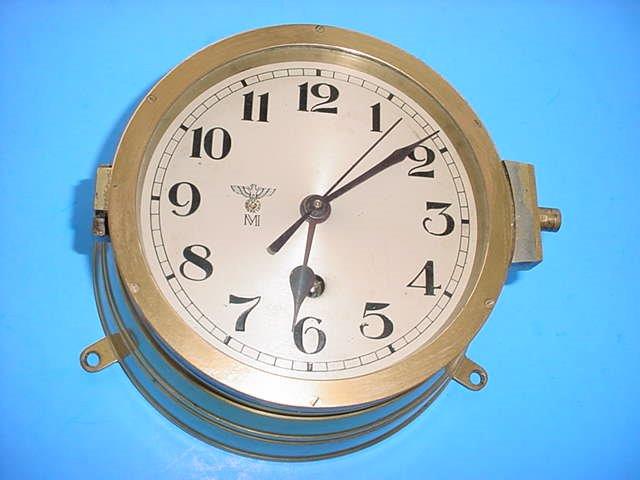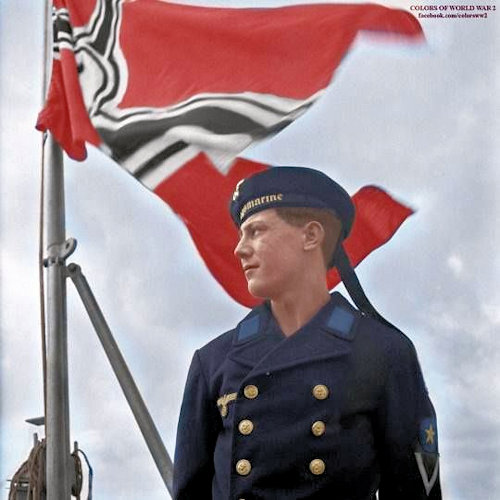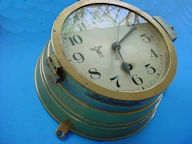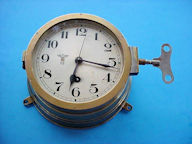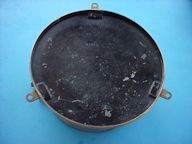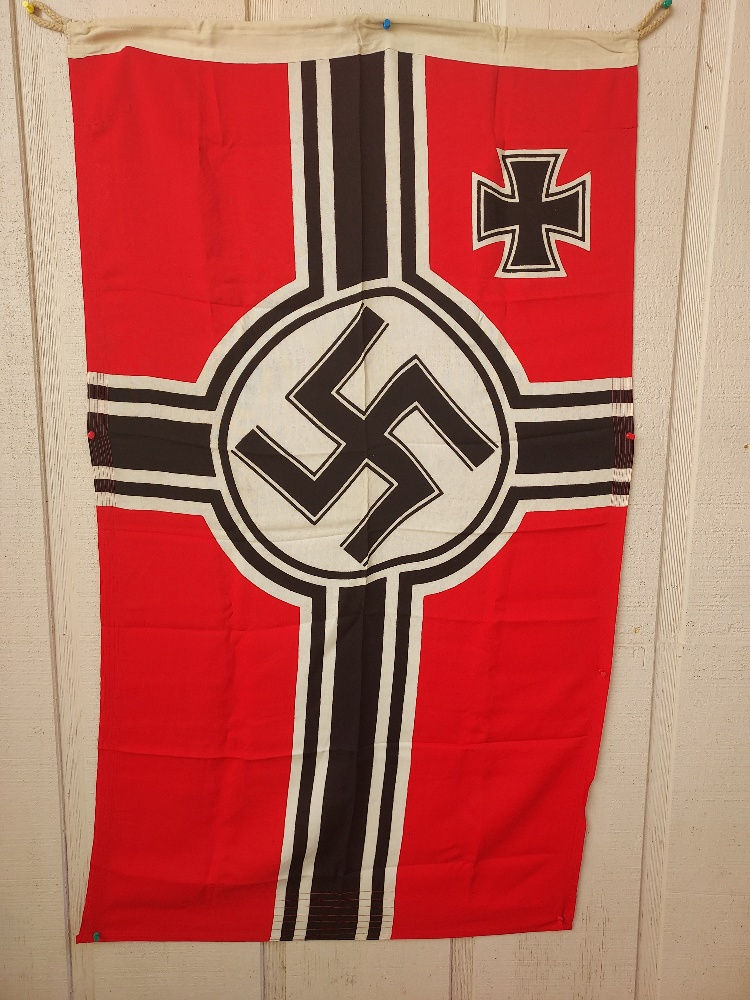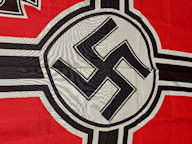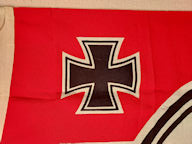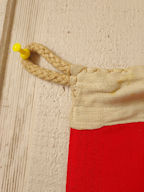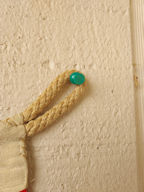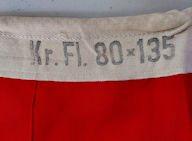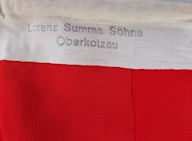|
[ Home Page ]
[ Third Reich ]
[ Old Reich ]
[ Kaiser Reich ]
[ Imperial Russia ]
[ Axis Powers ]
[ Italian Fascist ]
[ WW I ]
[ Landsknecht ]
[ Kaiser Wilhelm ]
[ Frederick the Great ]
Kriegsmarine
Page 10
|

|
|
Kriegsabzeichen (U-boat Badge) (Item KRIEG 10-1)
|
|
DESCRIPTION: A nice one, good detail (heavy) made by Schwerin in Berlin. This is a nicely marked text-book example; they’re getting harder to find in A-1 condition like this. Introduced in 1939, it differed from the WW-I version in that the imperial crown was replaced by the eagle and swastika; the national emblem and the submarine were modified. It was in one class only (gold). We believe this is the earlier version in bronze. Later ones were in zinc with a gold wash. This one is in particularly fine near- mint condition. You will not find a better one.
< PRICE: SOLD
|
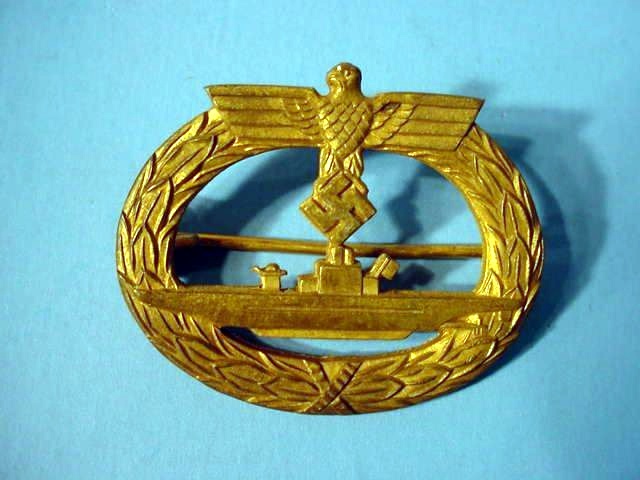
|
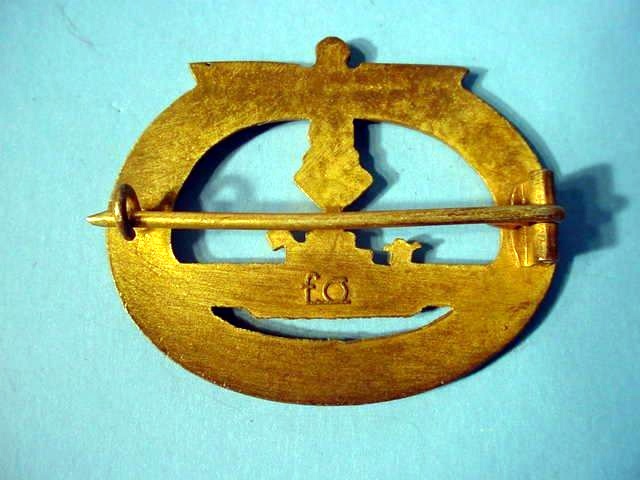
|
U-Boat Badge (Item KRIEG 10-2)
|
|
DESCRIPTION: Here is a late-war U-boat badge. This is the one with the horizontal needle pin and is marked with the manufacturer’s logo; it’s probably made of zinc, as the late ones usually are. You can tell this by looking at the back of the badge where some of the patina is worn from actual use on a uniform. The area is a bit grey up at the top where it would rub against the woolen fabric. The badge is also lighter than the earlier examples made in pure brass. Some say that the late ones are far more scarce than the early pieces. On the back is a mark (f o). This is the logo of the firm of Friedrich Orth of Vienna. This is a textbook example of the late-war badge of the U-boat service. “They went down to the sea in ships.” (Kriegsmarine) All glory to the name.) Heil das helden Matrosen!
PRICE: SOLD
|

|
|
Prize for Sailboat Racing for the Kriegsmarine (Navy) (Item KRIEG 10-3)
|
|
DESCRIPTION: This is a beautiful little plaque that normally would be mounted on wood or marble (the winner’s choice). The same type was used by the Luftwaffe and Army for various competitions, but with different insignia shown. This one is an honorable mention or prize for participation in the Navy’s sailboat-racing competition. Mint condition, measures 2 ½ x 3 inches.
PRICE: $245.00
|

|
Cigarette Lighter as Issued to Naval Personnel (Item KRIEG 10-4)
|
|
DESCRIPTION: Here is a rarity! A cigarette lighter as issued to Kriegsmarine personnel. It measures 2 ¼ inches long and is crafted in aluminum. Both caps screw off to facilitate usage. Smoking was, rightfully at least, discouraged in the German services because of early medical findings having to do with the dangers of tobacco usage, but the branch of the Wehrmacht that most ignored this were the naval personnel; especially the U-boat crews. Their administrators knew it was an impossible task to curtail smoking by the young Matrosen, so in the handy-dandy kits issued to these sailors before they set to sea, you would always find these little lighters. RARE! If you had $100 to spend it is doubtful you could find one.
PRICE: SOLD
|
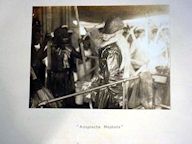
|
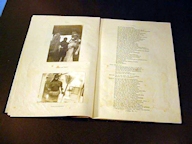
|
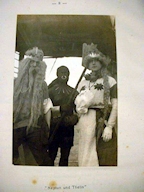
|
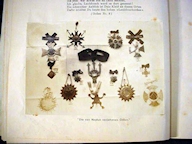
Neptune's medals and orders
|
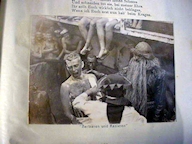
The tortured 'wogs'
|
|
German Cruiser SS Berlin Neptune’s Baptism at Sea (Tauf-Akton) (Item KRIEG 10-5; WWI 12-18; ALBUM 4-16)
|
|
DESCRIPTION: It has long been a custom of many nations’ navies to hold a ceremonial initiation rite to celebrate and commemorate sailors’ first crossing of the equator. These recruits are called ‘Pollywogs.’ The two-day event (evening and day) in which previously indoctrinated crewmembers (Frosty Shellbacks) are organized into the royal court of Neptune to indoctrinate the “slimy pollywogs” into the mysteries of the deep. Physical hardship, in keeping with the spirit of the initiation, is tolerated and each pollywog is expected to endure a standard initiation rite in order to become a Shellback. The event of the equator crossing is called Wog Day, and after crossing the line pollywogs receive subpoenas to appear before Neptune, God of the Sea, and his court and Neptune’s assistant ‘Davy Jones’ and her highness, Amphitrite, who are represented by the highest-ranking seamen who officiate at the ceremony which is often preceded by men dressed up as women afterwards. Some Wogs may be interrogated by King Neptune and his entourage and the use of truth serum (hot sauce and after shave) plus uncooked eggs put in the mouth and numerous other silly indignities and ordeals are experienced by the Wogs. They are even in some cases forced to crawl through shoots of rotting garbage, hair chopping being coated with axel grease, being locked in stocks and pilloried. They might be pelted with mushy fruit, etc. All this for the entertainment of the Shellbacks. Once the ceremony is complete a pollywog receives a certificate declaring his new status. This has been for the most part an almost identical ceremony on ships of all nations (an old naval tradition) and the maritime Germans were no exception. In fact with typical Teutonic tradition they of course had to bring it almost to a science exceeding any other navy in the furthering of the custom. What we have here is a rare book that could be considered a ships log of sorts but it chronicles the Tauf Akten (the baptism of the sea at Neptune’s Court) aboard the famed Kreuzer Berlin (cruiser Berlin). The SS Berlin was a passenger liner of the early twentieth century, which later saw service as an auxiliary cruiser of the Imperial German Navy during the First World War. She was built in 1908 by A.G. Wesen of Bremen for the North German Lloyd Shipping Line and saw service on the Genoa-to-N.Y. route prior to the outbreak of the war. In August 1914, she was taken over by the Kaiser’s navy for service as an auxiliary cruiser. Berlin was one of the more successful of Germany’s raiders accounting for the single most grievous losses to the British Royal Navy’s strength in the early “Klein-Krieg”campaign. After many engagements Berlin sought to return to Germany, but put in to Trondheim with storm damage and really was unfit to leave port and she was interned by the Norwegians on November 18, 1918. She remained in Norway for the duration of the war. There is some confusing information about her eventual destination; some say she was turned over to the British for war reparation. This book proves different because in 1925 the ceremony here took place and all the printed ceremony is chronicled in the German language. The log book is comprised of 20 pages and 10 great pictures of the initiation ceremony that are actually hilarious. This is actually an archival treasure important to the annals of the German Sea Service.
PRICE: $350.00
|
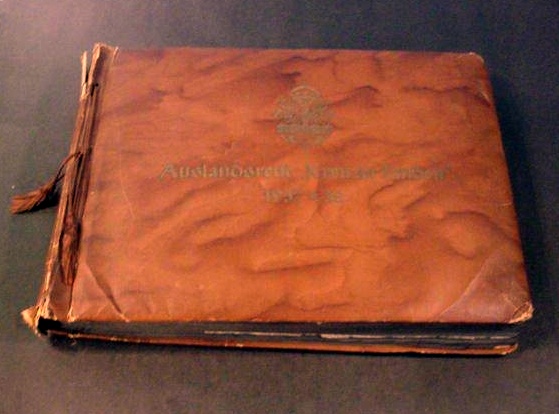
|
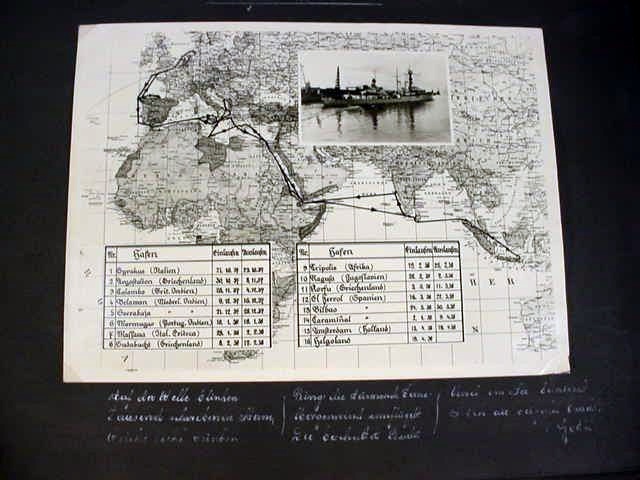
|
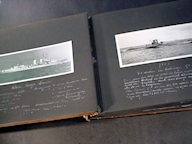
|

|
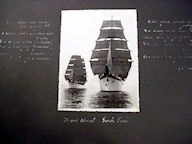
The famed training ships
|
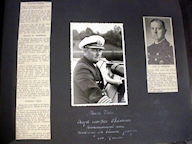
The captain
|
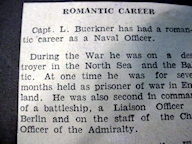
|
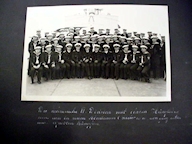
Entire ship's company
|
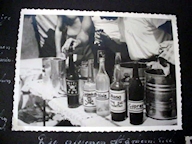
|
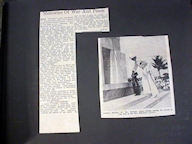
A prayer for peace
|
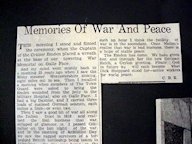
|
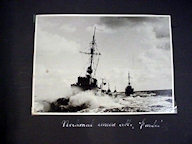
Emden underway
|

|
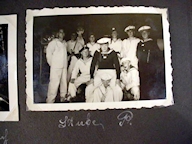
|
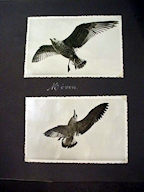
|

|
|
Auslandsreisen Kreuzer Emden (Foreign Voyages of the Cruiser Emden)
(Item KRIEG 10-6; ALBUMS 3-12)
|
|
DESCRIPTION: Here is a huge album of photographs chronicling the foreign voyages of the cruiser Emden. Emden was a light cruiser built for the Reichsmarine in the early 1920s. She was the only ship of her class and was the first large warship built in Germany after the end of WW I. She was commissioned into the German fleet in October of 1925. She was armed with a main battery of surplus single-gun turret 15-cm (5.9-inch) guns left over from the war. She had a top speed of 29 knots. Emden spent the majority of her career as a training ship in the interwar period. She conducted several world cruises to train naval cadets and the album offered here clearly illustrates this duty of Emden. She participated in the invasion of Norway in April 1940, and then resumed training in the Baltic Sea. Later, she was deployed to Norway to serve as the flagship of the mine-laying forces, there. In January 1945, she carried the disinterred remains of Field Marshal and President Paul von Hindenburg from Tannenberg in East Prussia to Pillau to prevent his remains from falling into the hands of the advancing barbarous Red army.
While undergoing repairs in Kiel, Emden was badly damaged by British bombers and was run aground outside the harbor and blown up by the Germans on May 3, 1945, to prevent the hated enemy from capturing the grand old lady of the seas. Her bow ornament is on display in the Deutsches Museum in Munich. The album is comprised of pictures of the training phases of her career the first page has a map and lists many of her training cruises. Then there are several pages showing pictures of Emden and a U-boat plus the famed four-masted training ships Horst Wessel and Gorch Fock. Then there is a page with pictures and two newspaper clippings about Captain L. Buerkner, who was known as Unser Vater (Our Father) by the “Blue youngsters” of the ship. The clippings are in English and the one long article is titled, “A Romantic Career.” The next charming picture is of the crew with its captain and other officers. It’s captioned “The Victorious 6th Cruiser Division with our Chief and we are looking forward to New Adventures.” Then this is followed by great pictures all with hand-written captions (often poetic) of the various cruises. Now and then a full-page, color photograph of the various strange places and strange people they visited. One has the caption “A wonderful tropical evening in Colombo was enjoyed in company with a Senegalese temple dancer.” Under these large, color illustrations are slips of printed paper in English explaining them. On one page we can see the formal funeral of one of the crew entitled, “The Last Parade.” There are two pages depicting the famed Neptune ceremony that is performed whenever a crew and ship of any nation crosses the equator. These pictures are hilarious. One of them is accompanied by a caption that says, “For dedicated housewives take: 1 spoon paprika pepper, axel grease, vinegar, shake well, and serve a refreshing cocktail, but be careful to prepare for constipation.” Many pictures of natives, Arabs, scenery monuments, etc., are present. One rather moving news clipping in English is seen along with a picture of Captain Buerkner laying a wreath at the foot of the British War Memorial in Ceylon. The recital is beautiful and the author prays for peace between Britain and Germany to prevail. Extremely rare are two visitation pictures of the Führer Adolf Hitler, himself, along with Admiral Raider officiating at the ceremony of the relaunching of the ship. There’s also a picture of Hitler and high officials disembarking the ship. Then there is the occasion of a cruise to India and Sumatra. Pictures of natives, another cruise map, pictures of local scenery in many climes. Then Norway, Finland, Sweden, etc. Some of these pictures are absolutely classic and beautiful. Many pictures abound of the crew in training and enjoying R & R, great picture of a U-boat in the North Sea, and, of course, pictures of sailors with a girl in every port. There is page after page of officers and crew enjoying ‘faraway places with strange-sounding names.’ There are pictures of the Argentine army in parade formation looking like mirror images of their German soldier and sailor comrades; pictures of the Sphinx and pyramids; visits to Arab lands; another original photo of Adolf Hitler, and the caption says: “The Führer boards the Panzerschiffe (armored ship) Deutschland. There’s a nice picture of a sailor of the training ship Gorch Fock and a picture of the ship; a wonderful picture of the ship’s ‘bug’ (its coat of arms) and the Iron Cross masthead; a beautiful picture of the marine, Garrison Kirsch, in Wilhelmshaven with the emblems of famous ships around the alter; pictures of assembled sailors of the Third Komp with several individual group pictures. Present is another news clipping heralding the arrival of Emden and the spectacular welcome by the plane of the Royal Navy’s HMS Emerald. Several more full-color pages are loosely found at the back of the book. This is one of the largest and most complete albums that we have ever found dealing with an important German ship of the line. All pictures are intact. The album cover in leather is very tattered and part of the spine is missing, but like the ship it stood the test of time and the entire interior is in great condition. This should be in a museum archive or in the collection of a responsible collector, who will realize the importance of this rare volume. The album measures 15 x 11 ½ inches and is 1 1/16 inches thick. We won’t undertake to count the pictures, but suffice it to say there are hundreds and all are prodigiously important and extremely interesting. We priced it most reasonably in the hopes that it finds a good home, but bear in mind its importance and realize that the candid pictures of Hitler are worth more than the cost of the whole album.
PRICE: SOLD
|
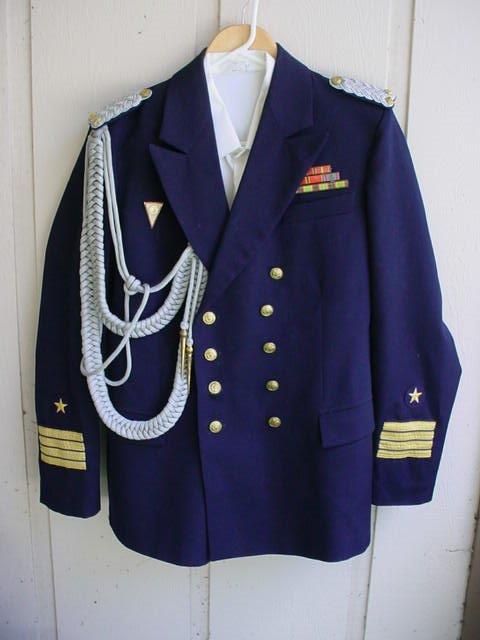
|
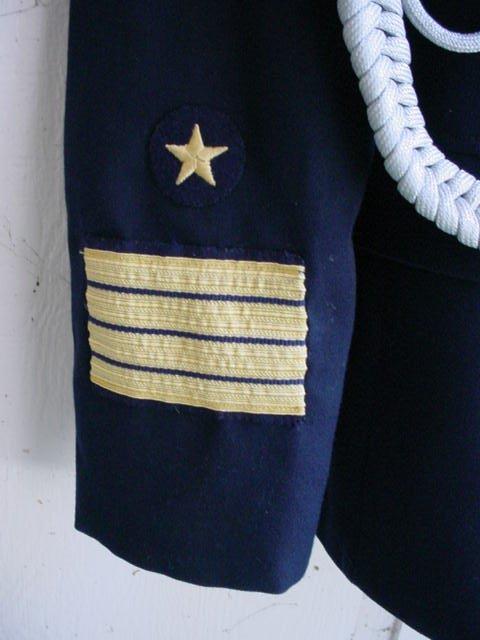
|
|
East German (Volksmarine) Naval Officer (Nearly Complete)
(Item KRIEG 10-7)
|
|
DESCRIPTION: Here is a crisp, minty uniform for a captain (Fregattenkapitän) in the Volksmarine. DDR naval uniforms in issue are today much more rare than the army and air force regalia and here is one that—except for shoes—is complete and in pristine condition. The People’s Navy was the official designation of the maritime forces of East Germany and part of the National People’s Army established in 1956. There were only 10,000 members of the Volksmarine including officers and enlisted personnel. The People’s Navy was dissolved—as were all branches of the former National People’s Army—on October 3, 1990, the day before the official National Reunification of Germany. Some of its staff were assumed into the Bundesmarine (which was henceforth called Deutsche Marine); most of the ships of the East German navy were either scrapped or sold. This beautiful uniform consists of everything that you see in our images and is offered for an extremely reasonable price.
PRICE: Complete except for shoes. $350.00
|

|
|
Naval Cap Title from the Unterseebootsflottille Emsmann (Item KRIEG 10-8)
|
|
DESCRIPTION: Here is a mint-condition Kriegsmarine cap title worn on the naval caps both white and blue. This flotilla was the fourth one formed in the German Navy. It was named in honor of Oberleutnant zur See Hans Emsmann, a U-boat commander of World War One. This flotilla employed Type 115 U-boats. Their first chief was Hans Rudolf Rosing. The cap title measures four feet long and is uncut and never issued or worn. It is of beautiful machine workmanship.
PRICE: SOLD
|
Imperial Naval Doctor’s Accoutrements (Item KRIEG 10-9; WW1 11-14 & KUNIFORMS 1-3) |
DESCRIPTION: This is a great grouping of several items that belonged to an Imperial Naval Officer of the Kaiser’s Marine (Navy). His name was Dr. Lange, a recipient of the Iron Cross. We have his personal items as listed ---
No. 1 - His shoulder boards (banjo type in the actual storage carton, they are in beautiful shape. From the two pips on the boards it is assumed he was a captain (Capitan Zur See). The case is also in great condition and has a purple velvet lining in its top portion .The boards fit very nicely inside.
No. 2 - There is a manual for medical personal in nice shape printed in Berlin in 1914 (first year of the war). This comes from the Reichs Marine office in the capital city.
No. 3 - A gorgeous fore and aft hat with carrying case. This is in beautiful, immaculate condition and besides the wonderful gold and silver boullion trim it has the national colors of black, white and red in ribbon form.
No. 4 - A great picture of Dr. Lang in a group pose with some of his command. He is the one wearing the very same hat and shoulder boards that we offer here. This picture is in its original period frame with original matting. On the back of this frame is a copy of a page of the Imperial Rangliste with Dr. Lange’s name showing. Here you can see that he won the Iron Cross. It is not often that we come across something as historically important as this when it comes to Imperial Naval items. To actually find all of this together from the Imperial officer with great provenance is a rare find indeed.
We are told that in the early 1920’s Dr. Lang moved to the U.S. and settled down in one of theWestern states.
PRICE: $1,950.00 This is indeed a bargain and a great investment for the collector or museum. |
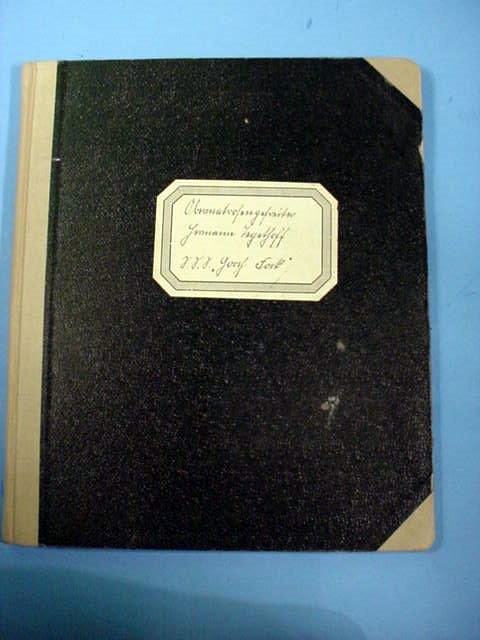 |
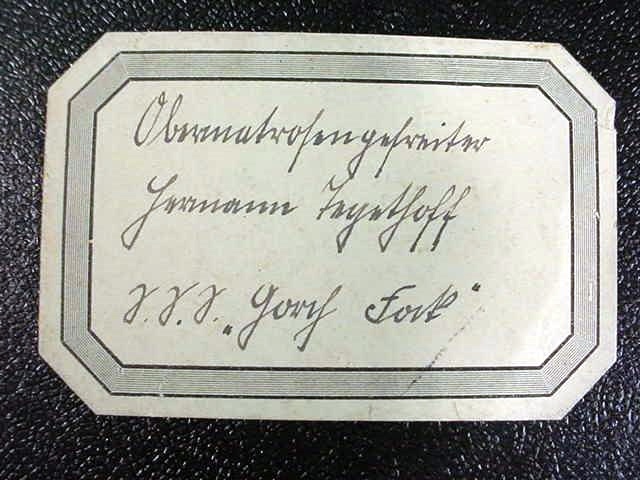 |
|
Logbook from the Training Ship Gorch Fock (Item KRIEG 10-12; ALBUMS 3-13)
|
DESCRIPTION: Here is a great hand-lettered and pictured logbook from a sailor who was assigned on the three-masted barque that was the first of a series built as school ships for the German Navy in 1933. This was the glorious Gorch Fock named for the German writer Johann Kinau, who wrote under the pseudonym ‘Gorch Fock.’ Kinau had died in the 1916 Battle of Jutland aboard the cruiser SMS Wiesbaden. Gorch Fock served as a training vessel for the German Reichsmarine prior to WWII. During the war, she was a stationary office ship in Stralsund until she was officially reactivated on April 19, 1944. On May 1, 1945, the crew scuttled her in shallow waters off Rügen in an attempt to avoid her capture by the Soviets, who had already fired at her for 45 minutes with tanks. She was then raised and salvaged and unfortunately she was now in the hands of the Reds and renamed Tovarishch (Comrade)—a terrible end to a proud German ship that now unfortunately was in homeport in Odessa. After the dissolution of the horrid Red dream in 1991, Tovarishch sailed under the Ukrainian flag and after several more transfers—including to England—she was transported to Wilhelmshaven, Germany, and then after some repairs she was finally returned to Stralsund in 2003. On November 29, 2003, the ship was rechristened Gorch Fock and is now a museum attraction there. On August 23, 1958, a modern Gorch Fock was launched in her honor and sails today again as a training ship for the German Navy.
The Logbook
This hard-bound notebook consists of about 30 pages of writing with the most charming hard-drawn illustrations done by the log’s owner who was the sailor Hermann Tegethoff, who held the German rank of Obermatrosengefreiter (senior seaman first class). The logbook is a history of his service on this famed ship of the line the SSS (Segelschulschiff, sailing school ship) Gorch Fock. It begins with a dramatic picture of the ship that Hermann had pasted in the inside front cover and around the picture he drew the black, red, and white colors of the Third Reich with two swastika flags: one civil and the other the Reichskriegsfahne (war flag). Next there is a drawing depicting the ship in a storm and under it is the sailors’ motto (Seefahrt tut not!) roughly translated ‘sea travel through anything!’) Then there are several written passages with photos and lists of officers with a great depiction (drawing) of a typical German sailor along with nomenclature of the ship. Next is a great, rare photo of the launching of Gorch Fock 3.5.1933 in Hamburg. Next he writes of the beginning of his training starting in 1936 and this goes for several pages with some pictures of ship life. He then talks of voyages to Sweden and Russia and he makes a drawing of the flags of these countries with more photos of the ship and its maintenance, then more history of his service, more ship pictures, a trip to Flensburg Marine School with a photo of the building along with a map he drew of the German/Danish border known as the Flensburger Förde. There are more drawings of possibly himself at work aboard ship, more about Flensburg then a charming page of his illustrations of comrades of the crew at work followed by a picture hand drawn on a whole page of sailors at work before the mast, then a great drawing of the crew at parade rest, the Korporalschaft and their corporal, then two more pages of text that comes to an end 20/3/1936. This must have been the end of the tour and his training. This is indeed a living history of one of the brave sailors who ‘go down to the sea in ships.’ I hope he survived the terrible war and here is the true testament to his memory and the memory of the beautiful stately ship Gorch Fock.
PRICE: $1,450.00
|
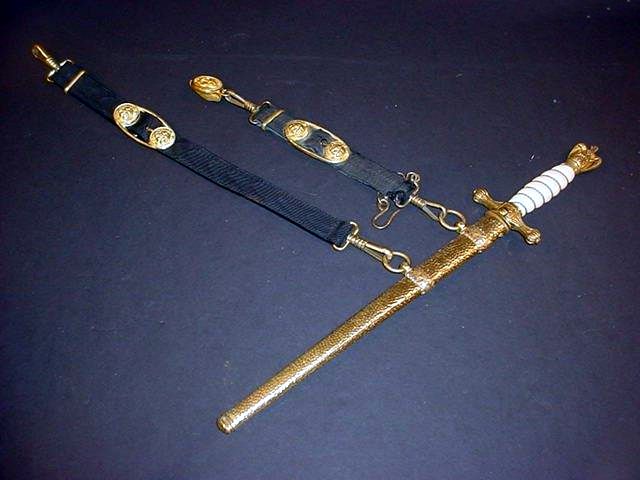 |
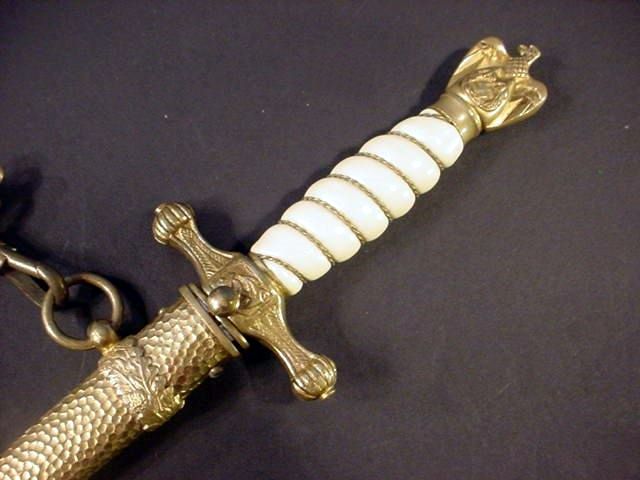 |
|

|
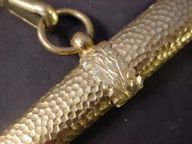
Note the fine, hammered scabbard
|
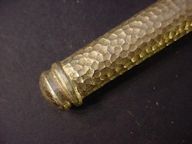
|

Note the fineness of the eagle
|
|
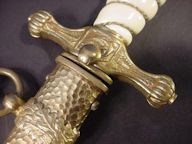
|
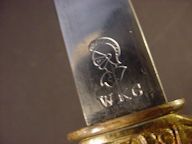
WKC Logo
|
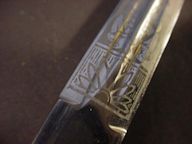
The wonderful etching
|
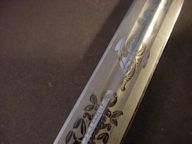
|
|
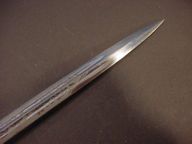
|
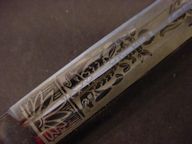
|

The bonus!
|
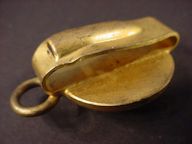
The belt attachment
|
|
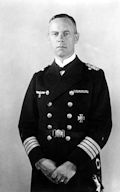
The dagger being worn by a Kriegsmarine officer
|
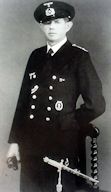
|
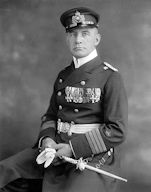
This is a WWI version being worn with lion-face hangers
|
|
Very Fine WKC Naval Dagger with Hangers and Rare Belt-Hook Device (Item KRIEG 10-13; NAVDAG 1-4)
|
DESCRIPTION: Here is everything you’ve ever looked for in a Kriegsmarine dirk. This is a prime example by WKC—Weyersberg Kirschbaum & Co.—of Solingen. It has the wonderfully, seldom-seen hammered scabbard that was done best by WKC. This is a textbook piece produced in the highest quality brass construction. The detail is exceptional to the eagle’s head, breast, feathering, wings, wreath, and raised swastika. The crossguard features the fouled anchor center blocks with acanthus leaves on both sides of the crossguard arms. There is 85-90 percent of the original gilding all the way. The grip is most attractive and has the wood covered in a perfect celluloid covering tightly wrapped with twisted brass wire. The gilt finish of the hammered scabbard exactly matches that of the hilt parts. The bands of the scabbard are nice and straight throughout. The bands feature overlapping oak leaves and acorns. The blade is the fine, elegant double-etched variety and is bright throughout. The etching is the fouled-anchor variety and has all the frosted background plainly seen. This blade seems to be in near-full-mint condition. The reverse ricasso is etched with the WKC logo. Altogether this a superb textbook example that could hardly be improved upon.
BONUS!
This dagger has the rare naval hangers and something never seen–the belt-hanging device. The straps or hangers are of the traditional naval style with buckles that have the double lion faces in the middle of the hangers produced in brass. The hangers are presented: one short and one long; front and back; high and low! with a retaining chain to stabilize it when worn on the uniform. The backs of the hangers are in blue velvet, but that velvet is practically all worn off on the short hanger’s back while the long one is practically perfect. We believe the original naval officer wore out the issued set and at one point must have replaced them. But, when the dagger was sold by the family in Hamburg, this is the way our picker received it. We tried to get the perfect short hanger later, but unfortunately without success. However, the item that is very rare and we never have seen before is the little belt clip that attached the hangers to the belt and is in the form of another little lion-face device with a loop to go on the inner belt of the tunic This little piece is truly rare.
PRICE: $2,450.00
|
 |
 |
|
WWII German Naval Dagger (Kriegsmarine); Possible Prototype? (Item KRIEG 10-14; NAVDAG 1-7)
|
| DESCRIPTION: Here is a very fine Kriegsmarine Dolch. It is one of the models with the plain nonetched blade. Although not as popular as the etched models, it is for some reason very much rarer. It is by the company that most collectors consider the best of all producers of such daggers: WKC—Weyersberg-Kirshbaum & Co.—of Solingen. The blade is in beautiful, pristine condition with the WKC logo plain to see. Most of the original gilding is apparent. The grip is in perfect condition being celluloid over a carved wooden base (no cracks or hair-liners). The grip is nicely wrapped with twisted wire. The scabbard is a fine example in matching brass. It is decorated with the usual lightning-bolt pattern at its bottom portion. The blade is what sets it apart from other models and may pronounce it a prototype as it has an army-type blade without the traditional double-fuller construction that is seen on the usual naval dirks. All other fittings are similar to other naval daggers we have handled. This is a good, honest piece, but a bit different, indeed.
PRICE: SOLD
|
 |
 |
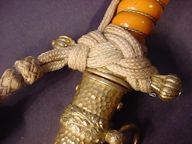
The special naval knot
|
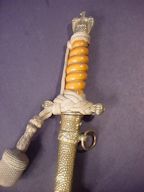
|
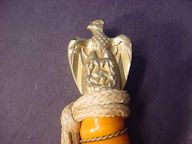
Fine WKC eagle
|
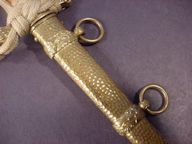
Great WKC hammered scabbard
|

|
|
Special German Officer’s Naval Dagger (Item KRIEG 10-15)
|
| DESCRIPTION: This is an elegantly fine Kriegsmarine naval dirk of the very finest quality. This is an absolute beauty with the most desirable deep pumpkin orange wire-wrapped grip and the impossible-to-rewrap portepee. The blade is in beautiful pristine condition as is the rest of this WKC (Weyersberg Kirschbaum) piece. The mounts are excellent gilded-brass types. The pommel is an outstanding example with a fully detailed eagle. The scabbard is one of the seldom-seen period hammered types. The gilt finish exactly matches that of the hilt parts. The fine blade is a double-etched variety with fouled anchor in the center area of the blade. All the frosting remains intact on the blade’s etching. All in all, this is the perfect Kriegsmarine dirk in all its glory! If you want the ultimate piece and have been looking for it for a long time, well here it is. The absolute greatest textbook WKC Kriegsmarine dagger. We have seen another comparable at $2,495.00. We price our much more reasonably.
PRICE: $1,985.00
|
 |
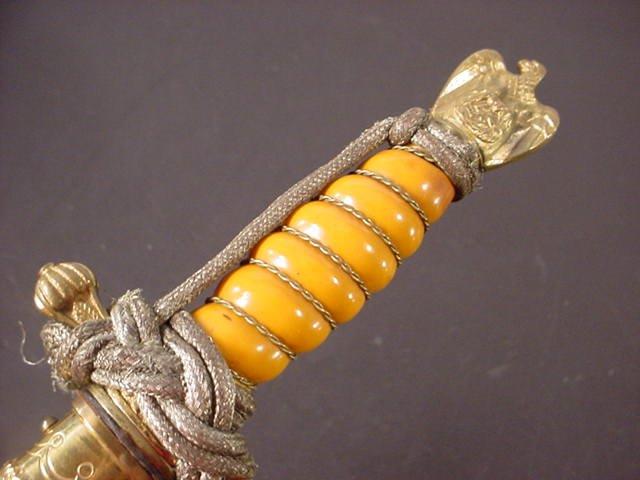 |
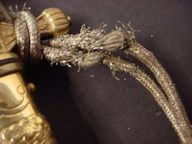
|
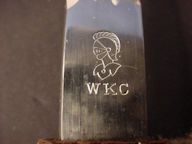
WKC logo
|
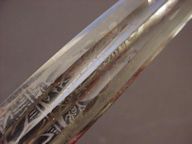
Perfect blade etching
|
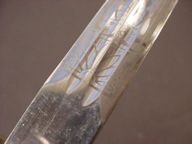
|
|
Beautiful Kriegsmarine Dagger with Portepee and Hanger Straps included (Item KRIEG 10-15a; NAVDAG 1-5)
|
| DESCRIPTION: Here is another fine Kriegsmarine dirk. This one is just as fine as they ever come up and it has the naval knot portepee that only a very few collectors have ever been able to tie. It also has the naval hangers with the lion’s faces. It is by WKC (Weyersberg Kirshbaum & Co.) in Solingen. WKC made the very best in edged weapons and its specialty it seems was the very finest naval daggers; both the Imperial Reich and the Third Reich. This one has the standard etched lightning-flash motif scabbard—not the hammered type as seen at Item KRIEG 10-13 and KRIEG 16-15 on these pages. The portepee is a bit frayed from use, but it is original to the dagger. The WKC logo of a knight’s helmet is clearly visible and the blade is about mint with beautiful etching depicting the fouled-anchor design. The grip is in the highly desirable pumpkin-orange coloration and is free from chips and cracks. The scabbard is in perfect shape. The pommel eagle is beautifully detailed as is the swastika in the wreath that he holds. The crossguard is covered by the portepee, but is also perfect. The hangers are in fine condition. The little lion’s-head buckles thereupon are tightly adhered and they are indeed handsome felines. The lock button shows some wear from years of use, but is functional and works well to secure the dagger in place. The tip of the blade is needle sharp. All in all, this is certainly a beautiful textbook example of the prettiest dagger of the Third Reich and with that pumpkin-orange grip it is the sharpest contest winner in dagger competition every time. You almost NEVER see the orange grips in available daggers and I remind you that on other sites I have perused I have seen comparable pieces, but almost never as quite as good an example like this one. I’ve seen them priced at numbers ranging from $2,750 to $2,950 without hangers. Ours is priced reasonably.
PRICE: $2,400.00; with hangers
|
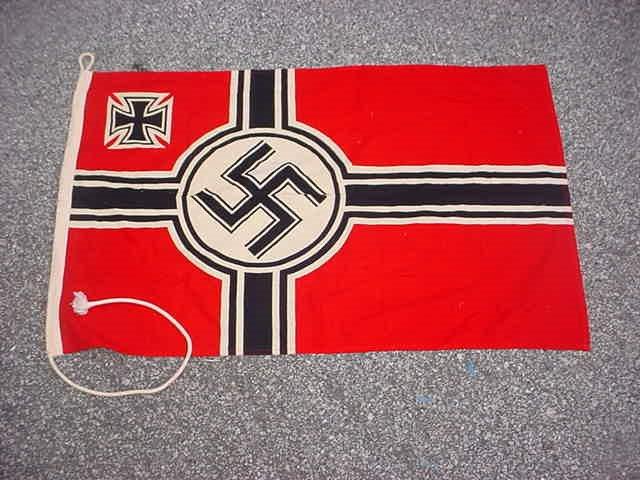 |
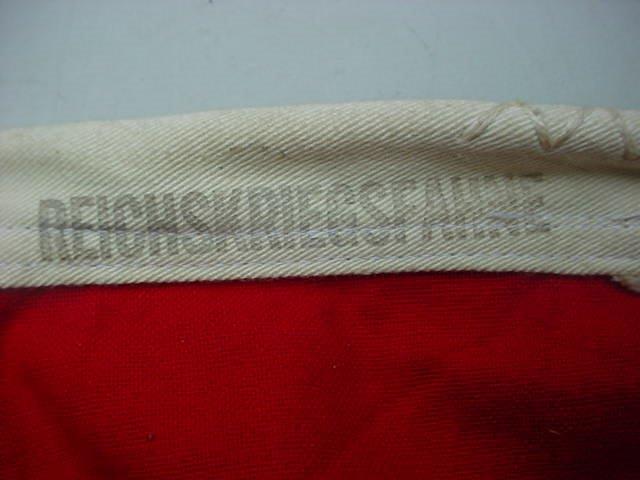 |
|
Kriegsfahne (War Flag) (Item KRIEG 10-16; FLAG 4-8)
|
| DESCRIPTION: Here in mint condition is a small Kriegsfahne in the size that all collectors seek: 3 x 21 inches. This is the size that displays best in a collection. The Kriegsfahne is the most collectible of all Third Reich flags and often the most difficult one to find in good size and condition. This one is exceptional and has written in its bunting end the word “REICHSKRIEGSFAHNE.” It has its intact lanyard and loop end. They don’t come better! Throughout our site under flags, you will see others that were sold in various sizes and there are explanations as to their usage. Some were made exclusively for the navy, but the war flag was used by all branches of the Wehrmacht. These sell quickly: don’t hesitate!
PRICE: SOLD |
 |
|
Heavy Duty Leather Coat used by a U-boat Kriegsmarine Kapitän (Item KRIEG 10-17)
|
| DESCRIPTION: Here is something very seldom seen because American GI looters just didn’t get near the Kriegsmarine (navy) equipment. Theirs was mainly the land war thus a coat like this was generally lost to the cruel sea or taken back at the end of the war to the Fatherland and worn in civilian use by those fortunate enough to possess one. We came by this and we purchased it at a Munich flea market from a gentleman who told us that this coat was preserved by his family and was the property of a Kapitän zur See (ship’s captain) who had died in 1965, and the coat was retained by his son and after his death it was passed on to the grandchildren who kept all of the man’s awards, his dagger, and a silver, framed picture of grandpa. These they would not sell under any condition nor would they give us the name of the U-boat captain. Therefore, we offer it with no name attached as per their wishes and condition of sale. The coat is very heavy and is of a large size. It has a collar of comfortable wool while the rest of the coat is front quarter horsehide. It has two lower flap pockets and two upper ‘slash’ pockets. The brass buttons are marked “Kriegsmarine” in front and there are four smaller ones at the cuffs. One cuff strap is missing and we have seen this before and believe this had something to do with the use of the hand and arm dealing with the quick access to the strap on the binoculars that the Kapitän would be continually using on a Wolfpack patrol. All the small buttons are there. The coat is in very fine condition overall and the warm sheepskin lining is in good shape, also. You could not find a commercial coat being offered today that would come up to the comfort and warmth of this WWII garment and if you did it would cost a fortune! Here is an ultra-rare relic that could still be worn by a man-sized man. The shirt, Knight’s Cross, and cap that you see here are added to our pictures for effect and they do not go with this piece. We offer the coat only. How often have you ever seen one of these rare items offered? I’d almost venture to say— never!
PRICE: $1,850.00; A real bargain!
|
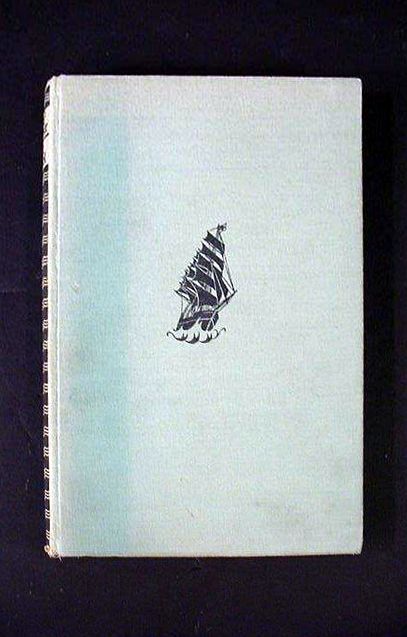
|
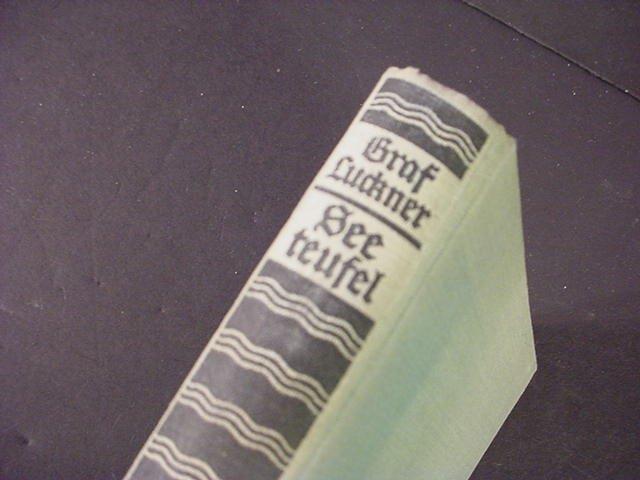
|
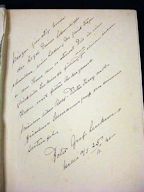
The dedication and signature
|

|
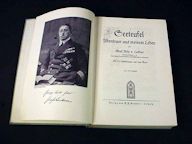
|
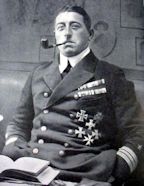
|
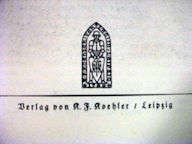
The publisher
|

|
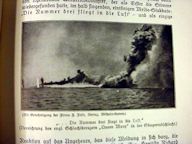
A direct hit
|
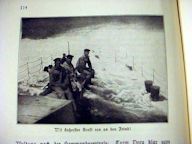
Translates: "With German power and the enemy."
|
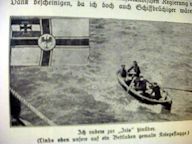
|
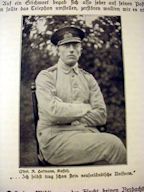
The Graf to the sea
|

We bagged a shark
|
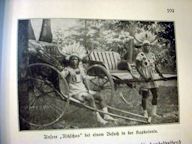
Dinner dress, but who might be their dinner?
|
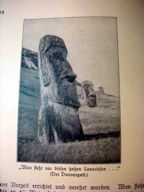
Easter Island"
|
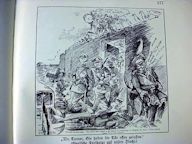
There are some such cartoons within.
|
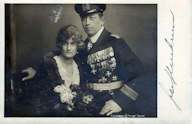
Felix von Luckner and his wife
|
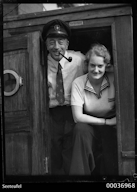
Count v. Luckner and his wife on postwar voyage
|
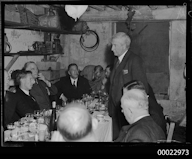
Luckner (center) at a reunion of former sailors long after the war
|
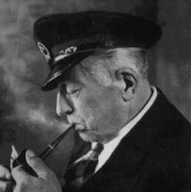
Luckner’s ever-present pipe
|
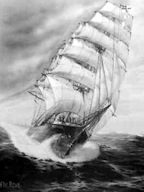
Sea Eagle
|
|
Book by Felix Graf Luckner Entitled Seeteufel (Item KRIEG 10-18; WWI 12-24)
|
DESCRIPTION: Here signed and dedicated is the book by the famed and celebrated “Sea Devil” Count Felix Graf von Luckner. We have given a capsule review of the life and fantastic career in the description of the photo above. He was a man’s man and a hero beyond any normal human concept. As a much-adored Teutonic warrior of the sea, the epithets “Sea Devil” and “Kaisers’ Pirate” he bore proudly as he faithfully and dutifully served his Deutsches Vaterland. His very countenance as he puffed on his ever-present pipe gave off an aura of not only self-confidence, but that look that seems to portray the demeanor of a super swashbuckler personified. He indeed loved the sea and was one of the greatest luminaries of the annals of the sea and those who heard her clarion call ever sounding on her waves.
The Book
This volume is named Seeteufel (Sea Devil) and has the subtitle Abenteuer aus Meinen Leben (Adventures of My Life). The book measures 9 x 6 inches and comprises 308 pages with 133 crystal-clear photographs of his ship Seeadler (Sea Eagle) and other pictures of his crew, his adventures, and so many, many others. When the cover is opened the dedication and signature is seen there in the count’s own handwriting. He says (translated): “May the good winds fill the sails of your ship of life and the cargo shall bring you luck. The direction it sails should guide you through a happy life and a harbor with good anchorage. To my beloved Rolf Dieter with a happy sailor greeting from the Sea Devil, Felix Graf Luckner. Halle Nov 25, 1940.” It’s signed by Count Luckner. This is a historical treasure, indeed. The book was published in 1921 in Leipzig. It is in remarkably fine condition with a little loosening in the inside cover across from the dedication. It also has the slightest fraying at the very bottom of the spine. This is a tale of high adventure, daring-do, romance, and sheer courage. The chance today of finding not only an original hand signature plus a wonderful dedication like this would be most fortunate for the archivist or collector. The pictures alone are absolutely great!
PRICE: $390.00; Most definitely reasonable
|

|
|
Signed and Dedicated Picture of the Famed “Sea Devil” (Item KRIEG 10-19; PERS 4-20; WWI 12-25)
|
|
DESCRIPTION: Felix Graf von Luckner (9 June 1881-13 April 1966), sometimes called in English “Count Luckner,” was a German nobleman, naval officer, author, and sailor who earned the epithet “Der Seeteufel” (the Sea-Devil); his crew was known as “Die Piraten des Kaisers (the Emperor’s Pirates). These titles were earned for Luckner’s exploits in command of the sailing commerce raider SMS Seeadler (Sea Eagle) between 1916 and 1917. It was Luckner’s habit of successfully waging war without casualties which made him a hero and a legend on both sides. In the early months of WWI Felix von Luckner saw action at the Battle of Heligoland Bight (1914). At the Battle of Jutland he commanded a gun turret on board the battleship Kronprinz Wilhelm. At the beginning of the war, Germany converted a considerable number of merchant ships into merchant raiders by equipping them with guns and sending them in search of Allied merchant shipping. Most of the armed raiders were not particularly successful, but they did tie up considerable Allied forces in hunting them. By early 1915, most of the armed raiders had been hunted down and sunk or else had run out of fuel and been interned in neutral ports. Hoping to revive commerce raiding, the Imperial German Navy equipped the impounded three-masted British sailing ship Pass of Balmaha (1,571 tons) and equipped her with two 105-mm guns hidden behind hinged gunwales, several machine guns, and two carefully hidden 500 HP auxiliary engines. She was commissioned as the auxiliary cruiser Seeadler (Sea Eagle). As Count Luckner was almost the only officer in the German Navy with extensive experience in large sailing ships, he was appointed to command her. His many hair-raising adventures would fill many books. He was the Teutonic superhero that Jack London would have admired had he been allowed to. There is an international Felix Graf von Luckner Society and you can find them through any of the number of search engines. It was founded in 2004 and it would be great if you would support them. It is an admirable group that celebrates one of Germany’s greatest heroes. The photograph measures 4 x 6 inches. The message written says (translated): “Ships may sink, but Rolf Dieter’s work, never, with greetings from your lieutenant.” Dieter could have been an author or shipbuilder or a fellow naval Kamerad, but at the very least someone whose work was admired by Count Luckner. So here is what could be considered a treasure to those who admire the exploits of this heroic warrior seaman that even the “God of the Sea,” Poseidon himself, would have approved of.
PRICE: $195.00
|
| 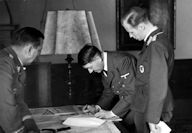
The Führer signs similar documents.
|

|
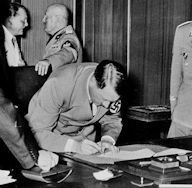
The Führer signs the Munich Agreement.
|
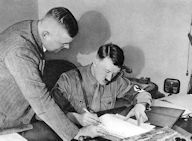
Hitler’s early signing: items important and trivial.
|
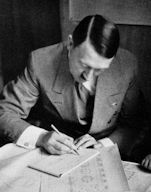
Adolf Hitler’s signing various items political and for an admiring public.
|

Hitler with Marshall von Blomberg (middle)
|
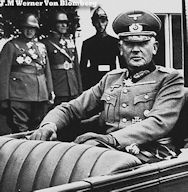
Generalfeldmarschall Werner von Blomberg
|
|
|
Document Signed by Adolf Hitler (Item KRIEG 10-20; AHSIG 1-15)
|
| DESCRIPTION: This is a very rare document that is related to the Kriegsmarine (Navy) as well as being a 100-percent original piece signed by the Führer; a treasure and a legal folio. It’s from Berlin and dated May 14, 1936, and is the promotion of Korvettenkapitän (lieutenant commander: U.S. and British equivalent) Heinz Edmund Shultze (who was in the Reich’s War Ministry) to serve as Fregattenkapitän (commander) and is highly honored as he accepts this new rank. In essence, the document says that the Führer issues this document and says that [Hitler] fully expects the promoted one to be true to his oath at all times for the Reich and he will fulfill his duties and earn the trust that [Hitler] has placed in him, which is now recognized by this appointment and [Hitler] will secure for him [his] special protection. Under this Hitler places his handwritten signature that is slightly blurred, but as I have stated before, Hitler signed so many hundreds of items placed upon his desk that you can be sure that now and then this had to happen. Charles Hamilton, the world’s greatest and foremost signature expert often said that he liked a blurry signature because it had the charm of demonstrating the human side of the great personalities. At the bottom of the document is the authorizing signature of Werner von Blomberg, who was a Generalfeldmarschall and at that time the German Minister of War and Commander in Chief of the German Armed Forces (deutsche Wehrmacht). The document is in wonderful shape. The embossed, huge eagle and swastika seal are clear when closely examined, although the photograph does not do it much justice. The size of the document is 12 x 8 ½ inches. This is one great and historically important document.
PRICE: SOLD
|
| 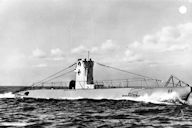
U-boat U-9 in pre-WWII (1936) layout.
Note the submarine's number on the hull, which was painted out in wartime.
|
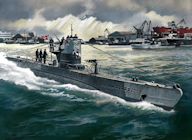
|
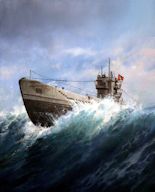
|
|
|
“Wandertag” Medal with U-boat Theme (Item KRIEG 10-21)
|
| DESCRIPTION: This medal is from the popular activity known as Wandertag (Hiking Day). These events held in even the smallest villages is a tradition that is basically a walking exercise—hiking—held in the autumn of the year. Townspeople and international guests get out and walk through the beautiful German countryside. Sometimes it is competitive; other times, just plain social, but always the event is named after some historical era, epic battle, or even some comical character such as would be found in the tales as spun by the Brothers Grimm. In the past, we have had such medals that featured diverse subjects as Field Marshal Rommel and teddy bears. Frederick the Great is often featured as is Bismarck, the Iron Chancellor. This medal has a representative war flag (Kriegsfahne) above with the words that translate to: “6th International Hiking Day 1981; Hiking Enthusiasts of the Sports Association 08 Bous.” Bous is a municipality in the district of Saarlouis and is situated on the Saar River. Suspended by chains is a figure of the German Type IIB submarine, U-9. The medal is fashioned by pieces from a zinc-based material, and is a really handsome little critter!
PRICE: SOLD
|
| 
Rope loop
|
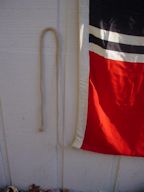
Complete rope assembly used
in securing to flagpole
|
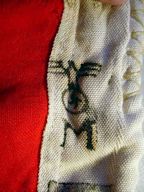
Nazi eagle stamp placed above
the “M” for Marine (Navy)
|
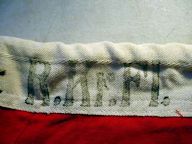
Initials “R.Kr.Fl.” which stand for
“Reichs-Kriegs-Flagge”
|

Size in German 150 x 250 cm
|
| 
Stamped-on identification of manufacturer:
G.A. Fröhlichs Sohn A.G. Warnsdorf. Sud.
|
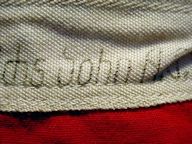
|
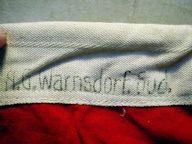
Town where made
|
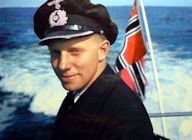
|

|
|
|
Reichskriegsflagge (War Flag) (Item KRIEG 10-22; FLAG 5-2a)
|
| DESCRIPTION: Here is one of the nicest one of these rare items that has come along in a long time. It’s the most desirable size at 150 x 250 cm (59 x 98 inches). It has all of the great bunting edge markings that anyone could desire. We have been able to discern one tiny moth hole at the end, but it doesn’t take anything anyway from the absolute beauty of this wonderful ensign. You just do not find them this nice anymore thus the price is quite reasonable considering all.
PRICE: SOLD
|
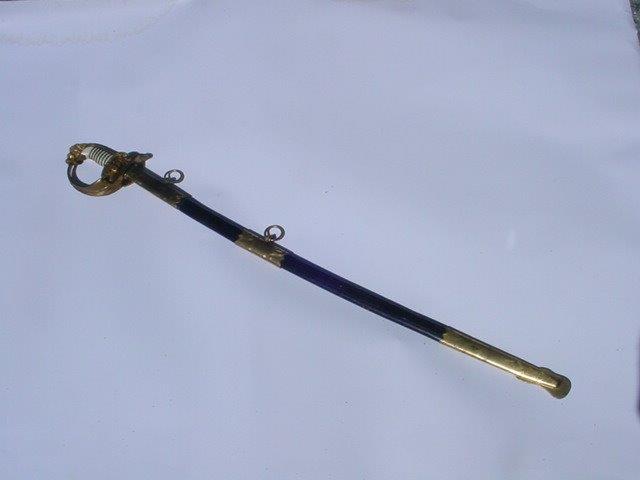
|
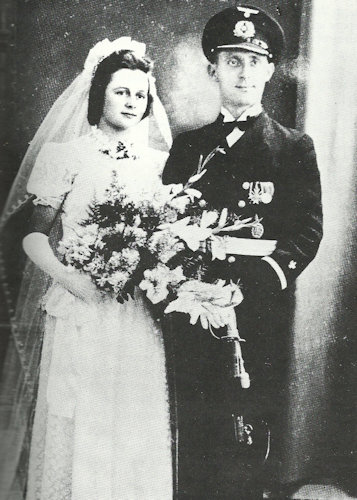
Note the officer’s sword in this wedding photo
|
| 
Note the tight wire
|

|
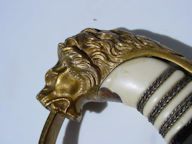
Here you can see the chip under the lion’s throat
|
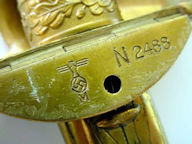
Stamping and serial number
|
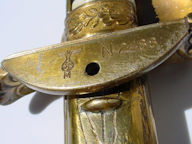
“N” for Nordsee
|
| 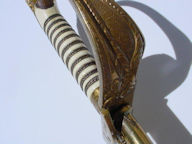
|
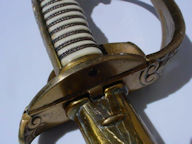
Original owner removed the post
|
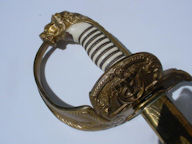
Front clamshell fully forward
|

Practically mint blade
|
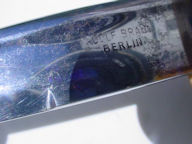
Distributor
|
| 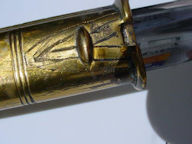
See where post was removed
|
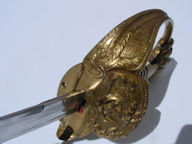
Here the front and back clamshells are hinged downwards
|

Sharp point
|
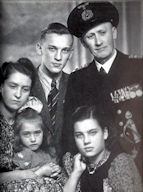
Note the sword at the officer’s side
|
|
|
Kriegsmarine Officer’s Sword—Signed Adolf Braun, Berlin (Item KRIEG 10-23)
|
| DESCRIPTION: This magnificent sword measures three feet long in its scabbard. It’s slightly curved with a fullered nickel-plated steel blade, magnetic with a blade spine and single dull edge. The blade is bright and crisp and has a sharp tip. The blade’s front hinged guard is marked “Adolf Braun, Berlin.” This is the supplier’s name, not the maker, as most of these swords were manufactured by Paul Weyersberg & Co. in Solingen. The blade does not even show any of the usual in-and-out runner marks. It’s really that near to perfection. The brown felt buffer pad is missing. These were usually found between the top of the scabbard throat and the hinged clamshell guard (cartouche) or langet with a detailed ornate pattern employing a beautiful fouled anchor. This larger guard is of the hinged drop-down variety. The smaller cartouche guard on the reverse is of the “fold up” variety and is stamped with a stylized Kriegsmarine eagle with swastika and under this is the “M” for “Marine” (Kriegsmarine) with serial number “N 2488.” The underside of the front smaller guard usually would have a hole and a post that served as a locking mechanism when dropped down and connected to this post giving locking stability, but on this sword there is the die hole, but it has no post and you can plainly see that it never had one, but we know that some companies had their particular style that would often be radically different than the methods of others. The gilt decoration on other parts of the sword, including the back strap, illustrate a repeating oak-leaf-and-acorn pattern. The sword has eleven rows of gold-colored springy wire in the recesses of the ribbed grip. The gilt brass pommel is designed with a magnificent lion’s head with a wavy design incorporated into the handle’s spine. This is represented as a continuation of the lion’s mane. The ivory celluloid grip plates are perfect except for a dime-sized chip at the very top just under the lion’s upper mane. We have never seen one of these swords that did not sport some injury in the celluloid grips and usually there is at least some movement in the strands of springy wire. On this one, the strands are extremely tight! . . . and there is practically no gilt wear. The scabbard has a smooth, finished black-leather-wrapped body with flattened u-shaped finial. Upper and lower pins plus the mid band and scabbard tip are in gilt brass; single elongated pins are used. We rate this sword extra fine and, except for the grip chip, it is exceptional! These swords, especially in this condition, are extremely rare.
PRICE: SOLD
|
| 
|
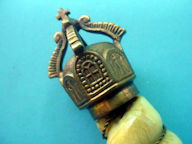
|
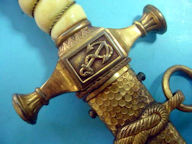
Obverse side
|
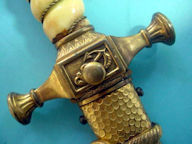
Reverse side with lock button
|

|
| 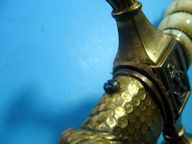
|
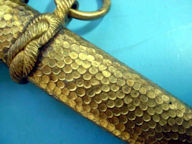
Note the beautiful pebbling
|
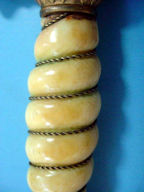
Gorgeous bone graining
|

|
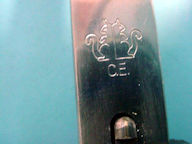
Company logo
|
| 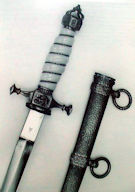
A similar dagger
|
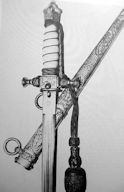
This one is very similar to the one we offer.
|

German naval officers with dirks, including Prince Adalbert (front row left)
|
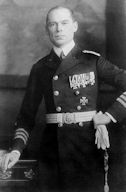
A naval officer wearing his Imperial dagger
|
| 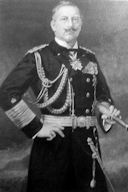
Kaiser Wilhelm wearing the naval dirk
|
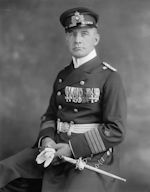
|

This is a similar dagger seen in Wittmann and Johnson's Collecting the Edged Weapons of Imperial Germany
|
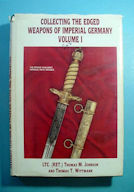
Here is the famed dagger of Prince Adalbert of Prussia that was sold by Germania International
|
|
|
Imperial Model 1902 Naval Dirk by Eickhorn (Item KRIEG 10-24; WWI 13-15; KWEP 5-15)
|
| DESCRIPTION: Here is one of the finest 1902 model naval dirks we have ever seen. The pommel is with the see-through Imperial Prussian Crown of Karl der Grosse (Charlemagne; Charles the Great). The dome-shaped eight sections, which run around the perimeter of the crown pommel, feature alternating crosses and Prussian eagles. Usually on these daggers, the cross at the top of the crown would be squared to prevent damage to the uniform when being worn. However, Eickhorn examples are often found, like this one, bearing the full-shaped cross. The panels that we mentioned each have a border of beads. The crossguard is of the fine Imperial types having raised fouled anchors in the center blocks. The quillion arms come outward from the center block and they end in stylized capstans. The bone grip is quite beautiful having a golden tone throughout and there is some nice-looking, surface age cracking that runs down the edges of both sides. There are no chips however, and the grain of the bone is gorgeous. This beautiful grip is wrapped with twisted, silver wire. The scabbard is great looking, too, being the rare pebbled type with no dings or dents (unusual in naval daggers). The bands that hold the rings depict typical naval ropes. The pebbled scabbards like this one seldom show up . . . and here is a perfect one. The blade is total perfection (mint) and has the wonderful sea-motif etching. The obverse side has the beautiful floral designs with a fouled anchor under the Prussian crown and below this is a sailing frigate and on the reverse side a different eighteenth-century sailing ship and more sea fauna décor. Here also is the Carl Eickhorn logo with the two squirrels seated back to back. The blade is bright and a pleasure to behold. The button that is pressed on the crossguard that holds the blade intact as it is withdrawn is nice and tight. With the scabbard total measurement is 15 ½ inches and the blade is measures 9 ¾ inches. All in all, here is an excellent opportunity to acquire an absolutely beautiful relic of the Imperial Navy. The rapidly disappearing type of naval dirk as this one is has all the extras; they just don’t come finer; an absolute gem!
PRICE: SOLD
|
| 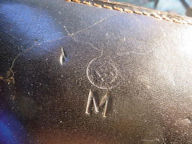
Kriegsmarine stamp fairly visible
|
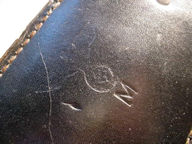
|
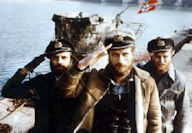
|
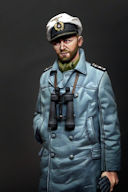
|
|
|
Set of German Binoculars—WWII German Navy (Kriegsmarine) 1941—Battle of the Atlantic (Item KRIEG 10-25)
|
| DESCRIPTION: This set of binoculars is in near-mint condition. It has a 10 x 50 or perhaps 7 x 50 prism set and probably by Zeiss in 1941. This particular type was standard naval issue in WWII and was used extensively by U-boat crews. The lenses are clean and they work as well today as they did 75 years ago. Each lens is covered with a rubber-hinged cap attached to a rubber base that can be entirely removed at will and need perhaps for more instant usage. The caps in rubber at the front lenses are thick and protect the instrument from damage if dropped. There are square loops for a wear strap to be used, but no strap was included when we purchased it. Individual eye settings are adjustable with center post manipulation. The binoculars are contained in their fitted sturdy black-leather case with hinged lid. Unfortunately, the sprung fastener was broken (see image) and the broken part is contained inside the case in the bottom. The lid of the case has the Nazi eagle and the “M” for “Marine” (Kriegsmarine). This is very lightly impressed, but easily discernible. This is an item that seldom shows up in this fine condition.
PRICE: $1,150.00; A fine investment indeed!
|

|
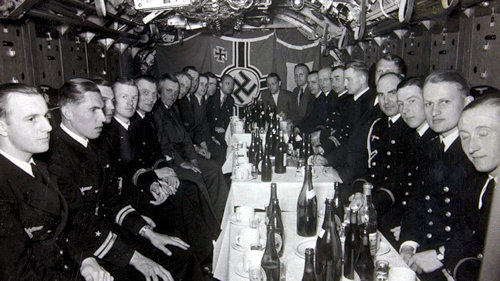
Wardroom aboard ship. Note the cup-and-saucer sets.
|
Navy (Kriegsmarine) Mess Deck Porcelain (1) (Item KRIEG 10-25a; MESSHALLPORC 1-1 |
| DESCRIPTION: Here is a coffee or tea set of mess-deck china; a cup and a saucer. These were on every ship of the line to include U-boats. Several companies in Germany manufactured these porcelains and seldom do you ever see a set where both were from the same manufacturer; this set appears to be so. The saucer is well marked with the eagle and swastika, the “M” for Marine (navy), “1939,” and the logo of the Jäger Company. In a search on the Internet we see that the tableware made by this company was almost exclusively for the German Navy (“M”). The cup is marked only with the eagle and “M.” The saucer is marked with the date “1939” (the beginning of WWII). Both items are in perfect condition. The saucer measures 5½ inches in diameter and the cup is 2¼ inches high. They’re of heavy construction with a beautiful, white sheen to these great, original pieces.
PRICE: SOLD
|
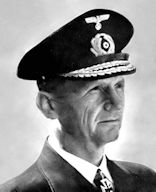
Grand Admiral Karl Dönitz
|
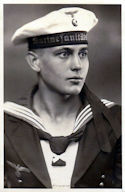
|
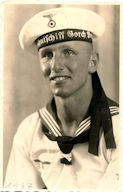
|
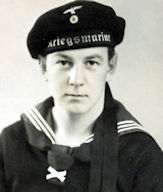
|
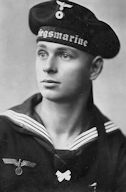
|

|
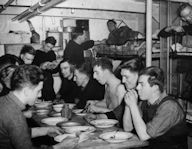
Chow hall shared with berthing compartment
|
Serving Tureen from the Deutsches Kriegsmarine (German Navy) Chow Hall(10) (Item KRIEG 10-25; MESSHALLPORC 1-10) |
| DESCRIPTION: Here is the rarest of the rare; a huge tureen of the typical “lion’s head” porcelain style. This type tureen was widely used by civilians in National Socialist Germany under the directive of the government’s Eintopf program. This was where the National Socialist party promoted the casserole meal called Eintopf and this translates to “one pot.” At least once a week citizens were encouraged to have a delicious meal of the Eintopf variety. We do not say that the military services were required to observe this, but aboard ship, casseroles were relished, especially when potatoes and various vegetable boiled in bouillon and thickened with flour were served; invariably the Eintopf vessels were used. First of all, the tureen featured here is in perfect condition throughout and has the traditional lion faces that enable the lifting of the vessel. The piece is quite handsome and even a bit dramatic looking especially in a table setting. This is typical Germanic mess hall china: tough as nails! This porcelain made for mess halls for the armed services saw great and famous porcelain firms as Meissen, KPM, Rosenthal, et al., produce special “Iron stone” pieces for distribution to the Luftwaffe, Heer, Kriegsmarine, and Waffen-SS. All of these pieces had the designation of the service; some with the logo of the particular firm and the year of issue and some like this one that has only the military identification of the branch of service the piece was issued to. In this case a WWII navy eagle-and-swastika logo is seen and it is probably by the firm Hutschenreuther, but I suppose the naval supply depot made a decision that Kriegsmarine china should not show a mfg. mark because every naval example we have ever seen is marked thusly with the eagle and swastika and “M” for Marine. This is a great example of the large serving pieces we rarely see, nowadays.
PRICE: $550.00
|
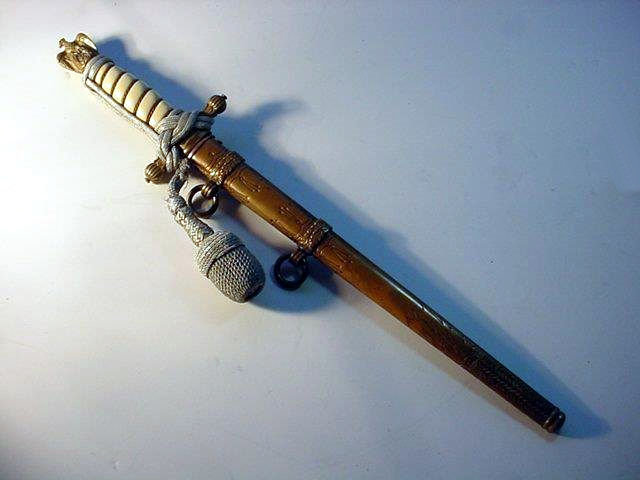
|
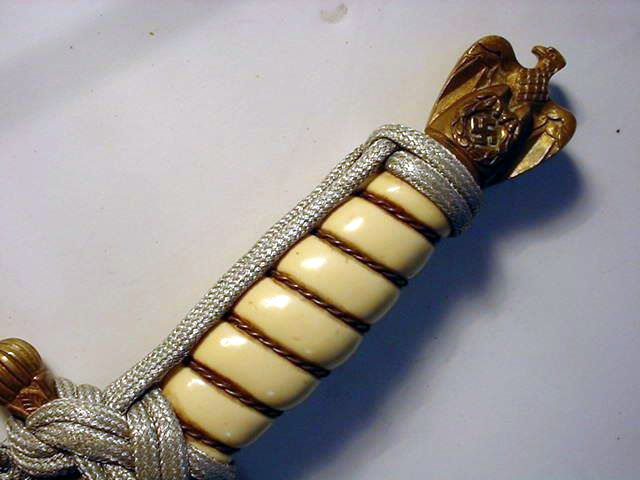
|
Kriegsmarine Officer’s Dress Dagger (Item KRIEG 10-26; NAVDAG 1-1)
|
|
DESCRIPTION: Here is a very fine example of a dagger by Paul Weyersberg & Co. of Solingen. It’s in beautiful condition and nicely engraved with fouled anchors and sea fauna. The blade is exemplary and the eagle at the top is very fine and the swastika held in his claws stands out clearly; unlike other examples by other makers. The celluloid-covered grip is perfect being wooden underneath. The scabbard is perfect as well and is of the jagged arrow design. The dagger is unpolished just as we received it from the veteran. The snap catch is fully functional and the remnants of the leather washer between scabbard lip and under the crossguard are still there. The original portepee is there and tied in the manner that only a Kriegsmarine sailor could do. It is a little bit frayed where it would have touched the scabbard over many years. The overall condition is excellent plus. This will be a proud addition to any WWII collection. You can hardly do better than this honest example of the most beautiful of the Third Reich daggers.
PRICE: SOLD
|
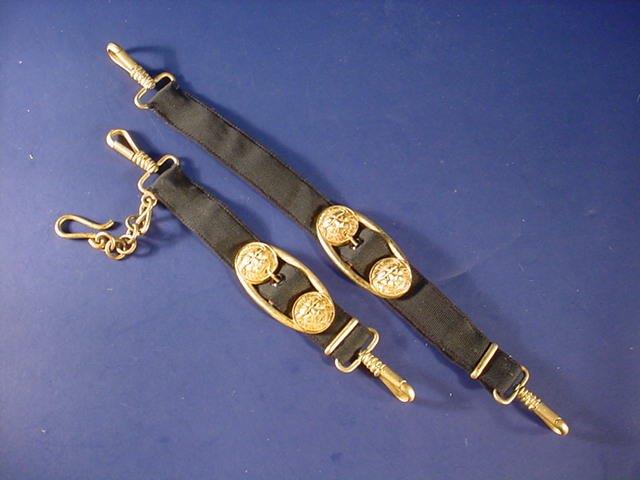
|
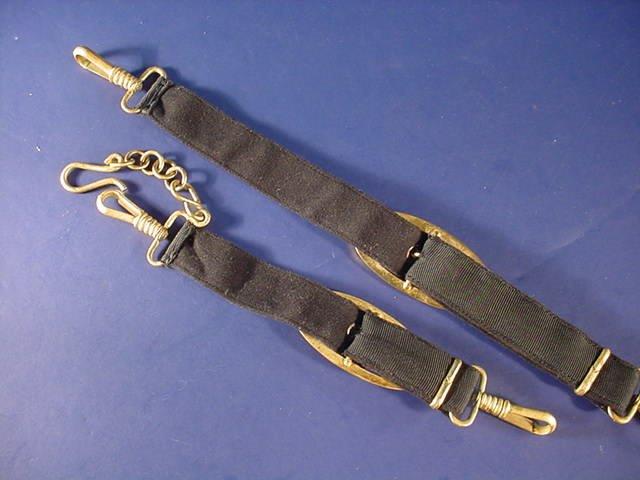
|
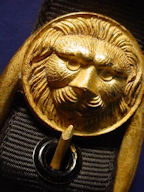
|
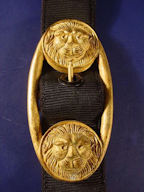
|
Pair of Kriegsmarine Naval Dagger Hanging Straps (Item KRIEG 10-27)
|
|
DESCRIPTION: Here is a pair of essential accoutrements to any fine Kriegsmarine dagger. The gilt on the various hanging clips and lion-face décor all has a beautiful gilt finish. I would say that this pair is in practically perfect condition. The frontal cloth on the pieces is fine cross-grain material. The back is comprised of velvet material. These hangers also have the balancing hook to keep the dagger in the wearer’s preferred position. If you really have a fine naval dagger, you can’t afford not to have these.
PRICE: SOLD
|
| 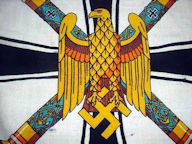
|
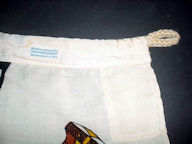
|
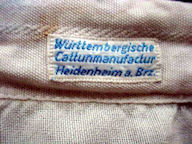
Manufacturer's tag
|
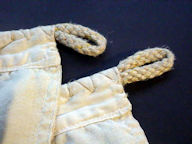
Rope hoist loops
|
| 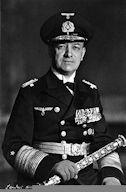
Grand Admiral Erich Raeder
|
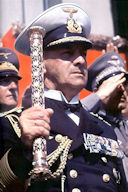
Grand Admiral Raeder at naval review
|

Grand Admiral Raeder with other high-ranking Wehrmacht officials
|
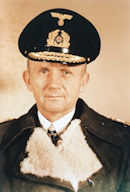
Grand Admiral Dönitz
|

Grand Admiral Dönitz
|
|
|
Command Flag of Großadmiral of the Kriegsmarine (Item KRIEG 10-28; FLAG 5-5)
|
| DESCRIPTION: The rank of Großadmiral–Grand Admiral–was equivalent to the Royal Navy’s rank of Admiral of the Fleet, and the U.S. Navy’s Fleet Admiral of the United States Navy, both five-star, flag-officer ranks. Only two individuals attained the rank of Grand Admiral during the Third Reich period: General Admiral Erich Raeder, then-Commander in Chief of the Kriegsmarine, was made a grand admiral on 1 April 1939, which he held until his resignation on 30 January 1943. Admiral Karl Dönitz, commander of the U-boat force, replaced Raeder as Commander in Chief of the Kriegsmarine, and assumed the rank of grand admiral at that time. This 12-inch-square flag is of the size normally flown on an admiral’s barge or a captain’s gig while the officer was aboard making ship-to-ship or ship-to-shore trips. This flag is of white-wool construction and has a multicolored, printed image of the insignia of the grand admiral. It features a golden-yellow Wehrmacht-style national eagle with black-and-brown accents superimposed over multicolored, crossed grand admiral’s batons, and a black-and-white bordered black Iron Cross. The batons feature blue staffs with golden-yellow, brown, silver, and black accents and detailing. Each has a golden-yellow fouled anchor and a black Iron Cross within diamond-shaped borders and fluted end pieces. Both sides of the flag have the image with the eagle facing towards the hoist edge (forward). The top, bottom, and fly edges of the flag have a dual-ply hem and the hoist edge has a dual-ply cotton bunting with a small tunnel-looped suspension rope. This is an extremely scarce rank/command flag for the highest rank in the Kriegsmarine. It has a few scattered moth holes but overall . . . excellent plus.
PRICE: $3,200.00
|
|
|
|
Very Nice Kriegsmarine (Naval) Battle Flag (Item KRIEG 10-29; FLAG 5-7)
|
| DESCRIPTION: Here is a really fine Kriegsflagge in the highly desirable size 67 x 39 inches. This rarely found flag has all the markings that collectors try to obtain. It has the eagle stamp that sits on the large “M” that shows the flag is for the Marine (navy ). Then it has the German size in centimeters noted as 100 X 170 (39 x 67 inches) and then is seen the company that manufactured it. In this case, it was by the firm “G.A.Fröhlichs Sohn A.G.Warnsdorf. Sud.” It also bears the initials “R.Kr.Fl.” which stands for “Reichskriegsflagge.” The flag is in practically mint condition with one tiny hole (really tiny!!!). If you have ever sought a really good-looking naval flag here it is! This one is a little different from the usual battle flag in that it does not have a hoisting rope. Rather, it has an open channel that would accept a hanging rod and it was probably made for display in a naval installation or fleet headquarters—RARE!
PRICE: SOLD
|
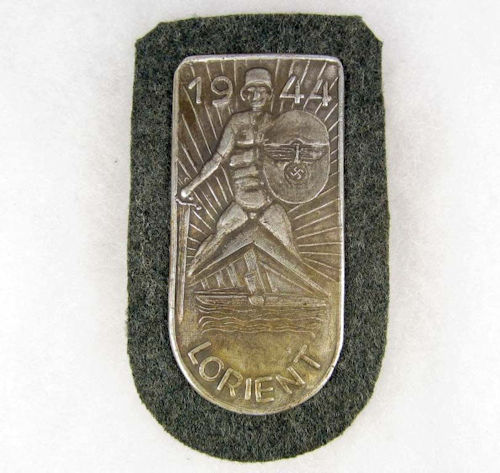
Lorient Shield
|
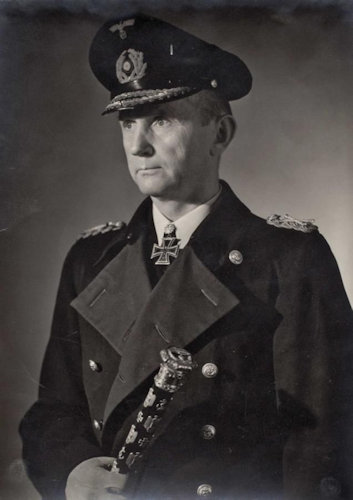
Grand Admiral Karl Dönitz
|
| 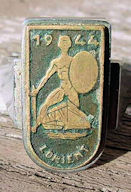
|

|
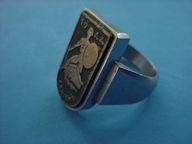
|
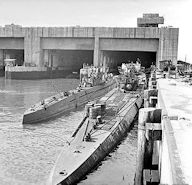
Lorient U-boat pens
|
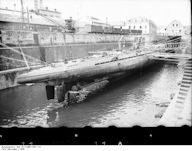
Lorient U-boat pens
|
| 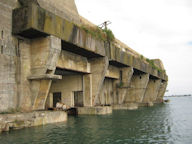
Lorient U-boat pens, today
|
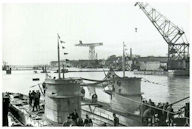
Lorient U-boat pens
|
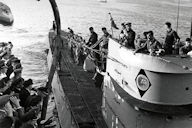
Heading home to the U-boat pens at Lorient
|
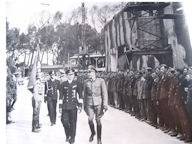
Admiral Dönitz at Lorient
|
|
|
Lorient Commemorative Ring (Item KRIEG 10-30)
|
| DESCRIPTION: The Port of Lorient, France, was of vital importance to the German naval agendas, and the most famous of the U-boats were docked there. In 1941, the Germans, then occupying France, chose to establish one of their U-boat headquarters in Keroman; however, the submarines quickly became targets of constant bombing from Allied air forces. It was decided to build the largest WWII U-boat flotillas for the bulk of the Battle of the Atlantic. Karl Dönitz, then supreme commander of the U-boat arm, moved his staff in Kernével, just across the water from Keroman, in Larmor-Plage. In 1943-1944, Lorient was nearly razed to the ground by Allied bombing, which failed in their objective of destroying the submarine pens, despite 4,000 tons of bombs dropped. During the war, the U-boat flotilla was part of the Keroman complex. Here, the subs were docked and repaired if necessary. They could not have been in a more perfect strategic location and in the beginning of 1943, Lorient was at the peak of its activity and there were as many as 28 U-boat at the base at the same time. These U-boat pens are intact and remain to this day. In their day, they provided forward bases for Germany’s commerce war against Britain. Some collectors are familiar with the Lorient Shield that, where authorized, was worn on the sleeve of any of the sailors and marine infantry uniforms. It was in recognition of the heroism of those who went through the “hell on earth” brought about by the Allied bombing. The defenders of the U-boat base were isolated following the Allied advance through Normandy, but managed to hold out until the end of the war. The Lorient Shield was designed to commemorate their tenacious defense. It was thought to have been designed by the German naval commander in December 1944. There remains great disagreement about the existence of the shield although in collectors’ circles it is the second most highly sought after behind the Cholm Shield—there is still controversy on it. I would say it was absolutely not an issued award, but what would stop vets of the battle from commissioning some skilled jeweler to make up such a shield to honor their participation in the epic battle and if they had a shield manufactured, then we would assume that at least a few of the veterans might have had the commemorative ring made, as well. Almost every German Third Reich ring ever produced has been copied by the sleaze balls that do that, but this one (at least at this point in time) has never been reproduced. So the one offered here is 100-percent authentic and period. It is in a size 11 with a good-sized picture area with a blackened background and has the naked helmeted Germanic warrior standing defiantly with sword and shield with eagle and swastika emblazoned upon it. The date “1944” and the title “Lorient” appear. This ring has been in a private collection for the past 25 years. It may well be unique.
PRICE: $1,500.00;Special price now as agreed with the consignor, $1,200.00
|
|
|
|
Unique Gift to One of the Most Successful U-boat Commanders of WWII (Item KRIEG 10-31; VERY SPECIAL ITEM OF WWII)
|
DESCRIPTION: This is a wonderful gift to Carl Emmermann (1915-1990), commanding officer of U-3037. Emmermann took command of U-172 in November of 1941, completing 5 patrols and sinking 26 ships for a total of 152,080 GRT. He became the commander of the 6th U-Boat Flotilla in November 1943, and in August 1944, became the chief of the Erprobungsgruppe TYP XXIII (testing group). In March-April 1945, he commanded the 31st U-Boat Flotilla in Hamburg. In the final days of the war, he took part in infantry duty around Hamburg as commander of Marine-Battalion Emmermann. After the war, he studied engineering and prospered in business. Kapitän Emmermann was born in Hamburg; raised and studied there and after his victories at sea he became one of the favorite sons of this the second-largest city in Germany, the city that somehow survived the murderous conflagrations by outright genocidal bombing by the British in their ‘”Mission to Europe.” Forty-five thousand human beings were incinerated—mostly civilians. This was planned by British Air Marshal Arthur “Bomber” Harris and approved by Prime Minister Churchill (May both of these war criminals be walking the hot coals even now!). We now offer the gift that the city gave to the returning hero on July 4, 1943, on the occasion of his receiving the oak leaves to the Knight’s Cross (Ritterkreuz). This was a very high accomplishment in those days of honor and glory. The statue is of Poseidon or Neptune, who was another highly honored hero of this famed seaport. Poseidon is one of the twelve Olympian deities of the pantheon in Greek mythology. His domain is the ocean and he is called the “God of the Sea.” He is usually depicted as an older male with curled hair and beard. They say the island of Atlantis was the chosen domain of Poseidon. When crossing the equator sailors of all nationalities get to “meet Poseidon” and many of his denizens of the deep. If you go on our site at KRIEG 10-5 and also the write-up just below it you will see some information about the ceremony that seamen recruits were obligated to go through when they crossed the equator in their ship (rare footage here).
The Statue
The noble statue of Poseidon is crafted in a zinc-white metal because at that stage of the war bronze or brass was virtually unobtainable, but the detailing is still superb. He stands with his trident at the ready atop an angry sea monster that bellows in pain probably from being speared by Poseidon’s trident. The god sports a fish’s tail to cover his private parts. His beard flows in the salty ocean breeze; he stands on a marble plinth. Upon this is seen a plaque that says translated: “To Captain-Lieutenant Carl Emmermann and the men of the U-172. The heartfelt best wishes on the award of the oak leaves to the Knight’s Cross on June 4, 1943, from your home city of Hamburg.” The statue on the base is 19 inches high (not counting the arm raised holding the trident). Including this measurement would give it another 9 inches to the top of the weapon. The base measures 4½ x 4 inches. Here is an art piece that is both prodigiously beautiful and historically important. Let it be known that they who go down to the sea in ships (Psalm 107:23) are the bravest of the brave! What further can be said about heroism other than that 30,000 young U-boat sailors gave up their lives for Führer, Folk, Fatherland, and the sacred west. For a synopsis of Captain Emmermann's record as one of the "Top U-boat Aces," go here.
PRICE: $3,900.00; One of a kind
|
|
|
|
Kriegsmarine Mess Hall Dish by KPM (Item KRIEG 10-32; MESSHALLPORC 1-29)
|
DESCRIPTION: Here is a beautiful dinner plate produced for Germany’s navy and used by the Kriegsmarine throughout the war. Many of the famous porcelain companies in Germany such as Meissen, Hutschenreuther, and Rosenthal made mess hall porcelain dinnerware for the Wehrmacht, but by far the premiere company contributing to the armed forces was the company that was first organized by Emperor Frederick II (Frederick the Great), who ruled the kingdom of Prussia from 1740 until 1786. This porcelain was known as “KPM- Berlin”—Königliche Porzellan-Manufaktur Berlin and that firm produced the absolute finest multifunctional kitchen porcelain. It has excelled in the art for some 255 years and is the oldest porcelain manufacturers in Europe. So, having said that, I might add that to own a KPM piece of porcelain and especially a historically important one is to acquire a treasure indeed!
The Plate
The dish measures 9½ inches in diameter and is in perfect condition throughout, with slight bottom wear from table use back in the 1940s. It’s clearly marked with the Kriegsmarine eagle and swastika over the “M” for “Marine.” Under that is a crown that sits above the letters “KPM.” Under this is “1941,” the date of manufacture. Navy-issue porcelain is much rarer than other Wehrmacht pieces because of the difference in the number of personnel in the navy compared to the number of other military personnel in the German army. This is a great, original, historically important item worthy of any good collection of WWII rarities.
PRICE: SOLD
|
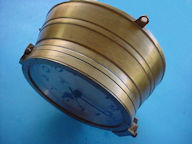
|
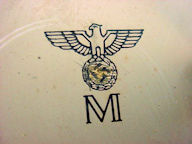
Slightly defaced N.S. eagle
|
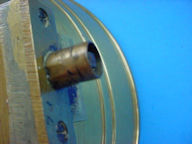
The locking post
|
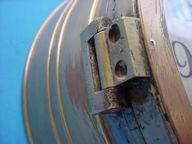
Opening hinge
|
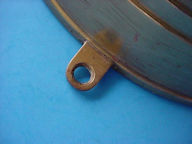
Bulkhead fasteners
|
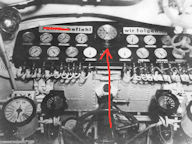
Clock mounted on instrument panel of a U-boat
|
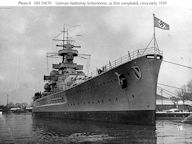
German battleship Scharnhorst
|
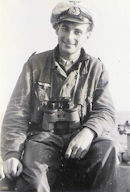
U-boat officer
|

|
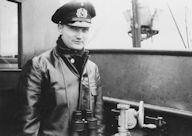
Captain on the bridge of a German destroyer
|
|
German WWII Naval Bulkhead Clock (Item KRIEG 10-33)
|
| DESCRIPTION: Here is one of the finer Kriegsmarine clocks that we have had over the years. They are quite rare and are seldom available. Kieninger & Obergfell probably make the clock and it has the serial number on the back. The clock was purchased from a German navy veteran who somehow managed to wrest it away from a German cruiser that was scuttled in Kiel in ‘45. Because of the repressive regulations at the time, he practically obliterated the swastika that is found clutched in the talons of the N.S. eagle that appears with the letter "M" which stands for "Marine" (navy). Other than that, the clock is in very good condition with its all-brass case—bright and beautiful. The back has three support tabs with holes for securing the clock to the bulkhead. The dial is in excellent condition with 100 percent of the original silvered finish. The movement is functioning well and keeps accurate time. The clock has its original key for opening and winding. This is an early model and is a highly collectable timepiece and is reasonably priced.
PRICE: $2,650.00; compare
|
|
|
|
German Kriegsmarine Battle Flag: Printed Cotton/Linen Construction; National War Flag–OUTSTANDING!! (Item KRIEG 10-34; FLAG 5-14)
|
| DESCRIPTION: This flag has black vertical and horizontal bars emanating from the central disc with white borders. Here is seen a red base field with a central white/black/white/black bordered white disc with a black-and -white bordered black-canted swastika to the center. The canton features a white/black bordered black Iron Cross. The hoist edge has a small dual-ply reinforcement panel to each corner. The hoist edge is trimmed in white tunnel looped cotton/rayon blend bunting for the suspension rope. The twisted suspension rope is still intact and has a closed loop to both the top and bottom edges. It’s very nicely maker marked with “Lorenz Summa Söhne Oberkotzau.” The size marked is 80 x 135 cm (31 x 53 inches). It’s in wonderful near-MINT condition! This example is the second pattern war flag of 1937 to 1945. These flags are seldom found in mint condition such as this one; a classic example here, they are rarely found, nowadays.
PRICE: SOLD
|
Contact Us
Please refer to item designator in parentheses in all correspondence.
Please E-mail for any additional information you may need.
If you prefer, contact 'Germania' at PO Box 68, Lakemont, GA 30552
or call at 706.782.1668.
Please! do not call during the wee hours of the morning. The best time for calling us is between 10 and 11 am and between 9 and 11 pm eastern time.
|



